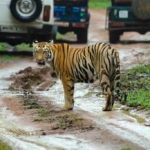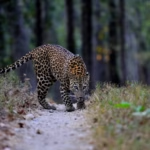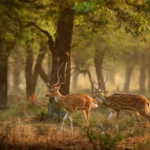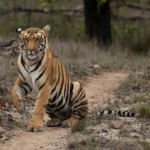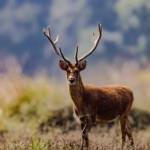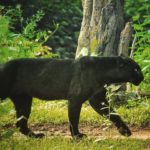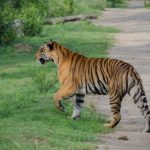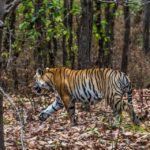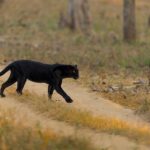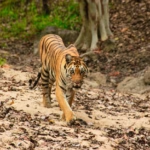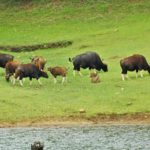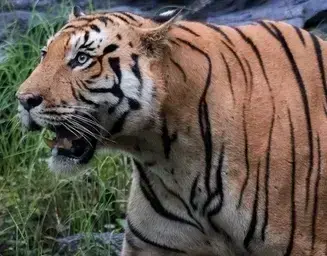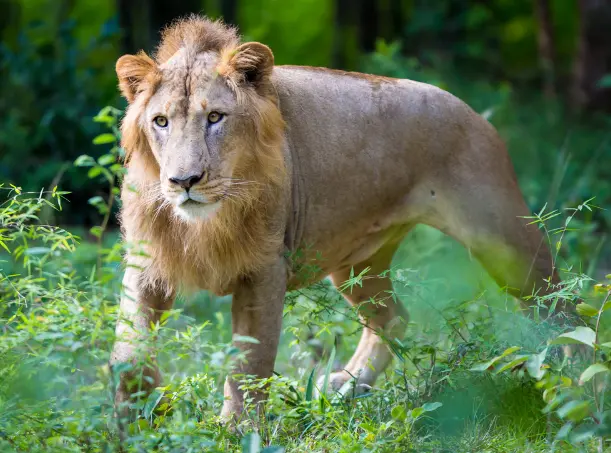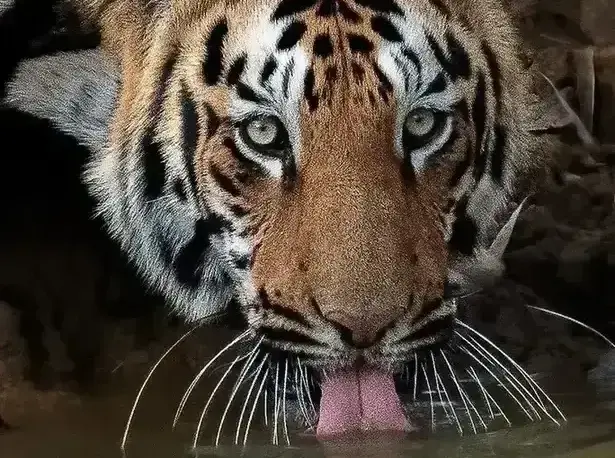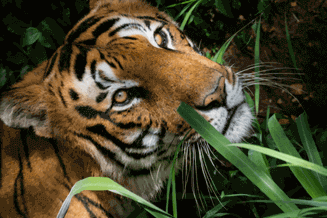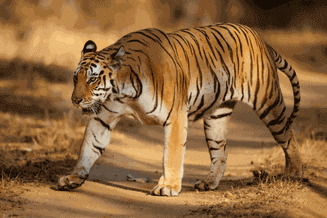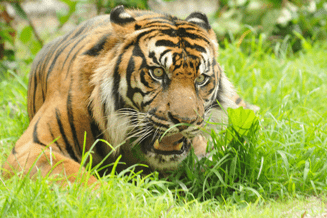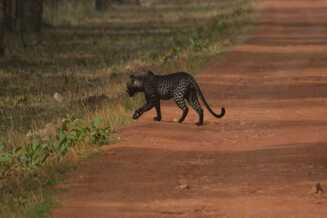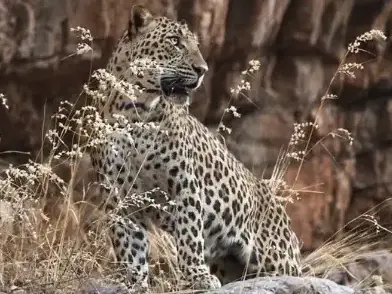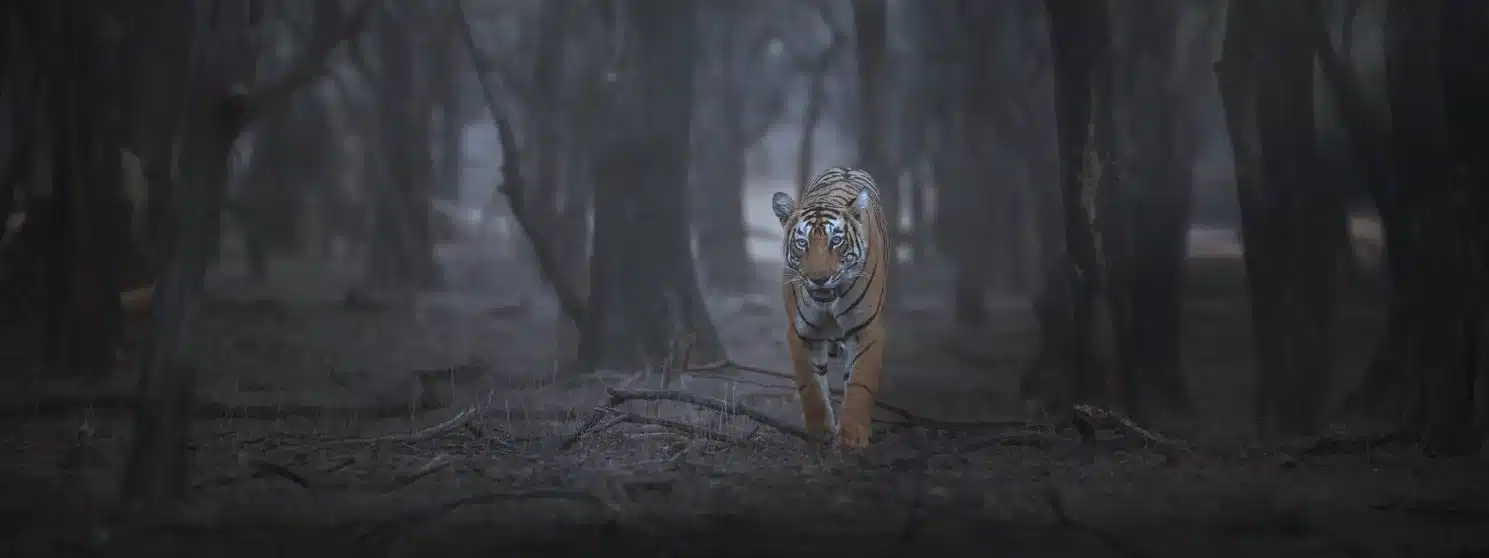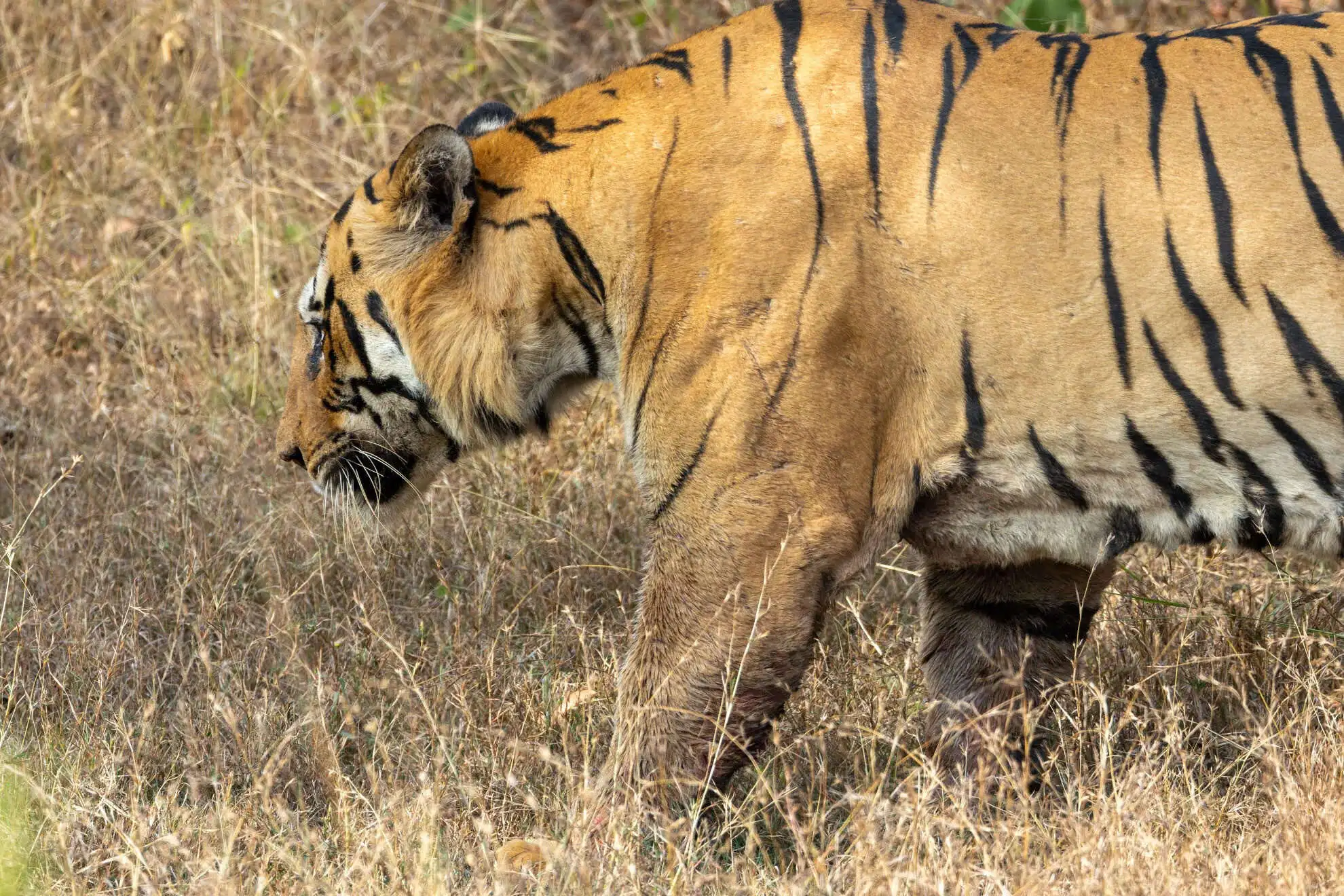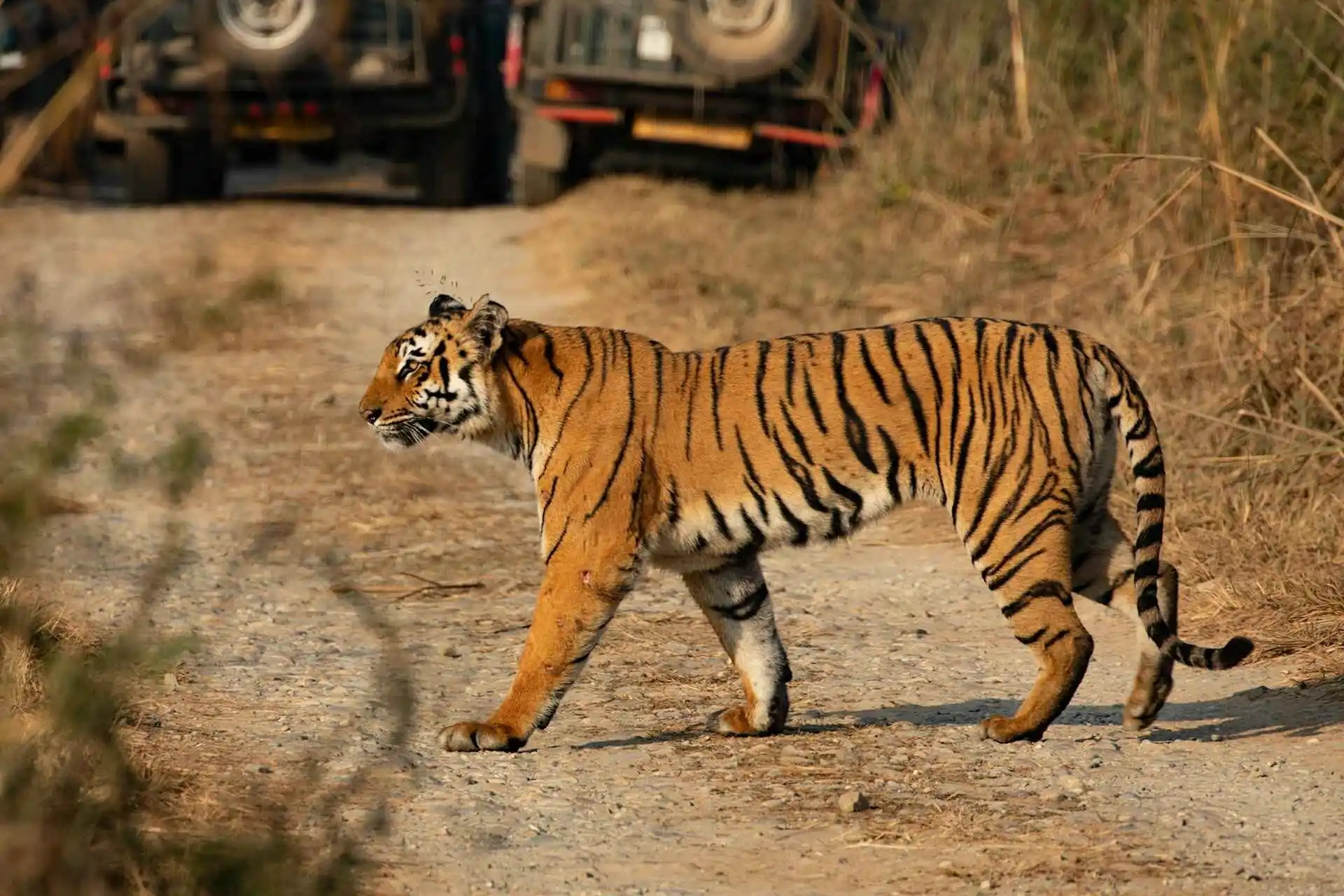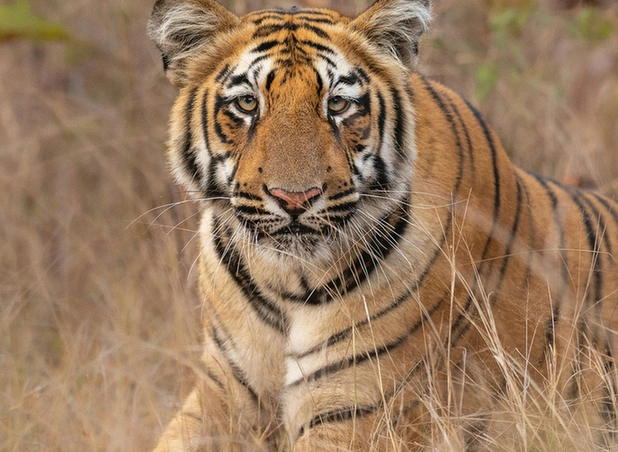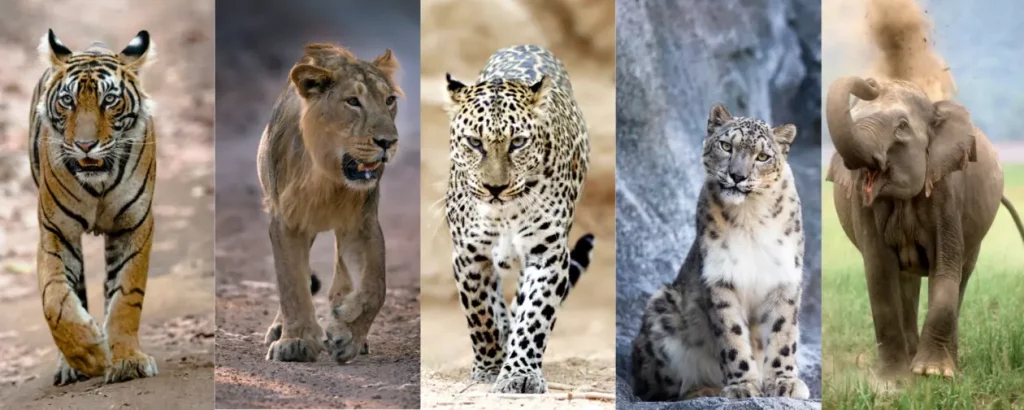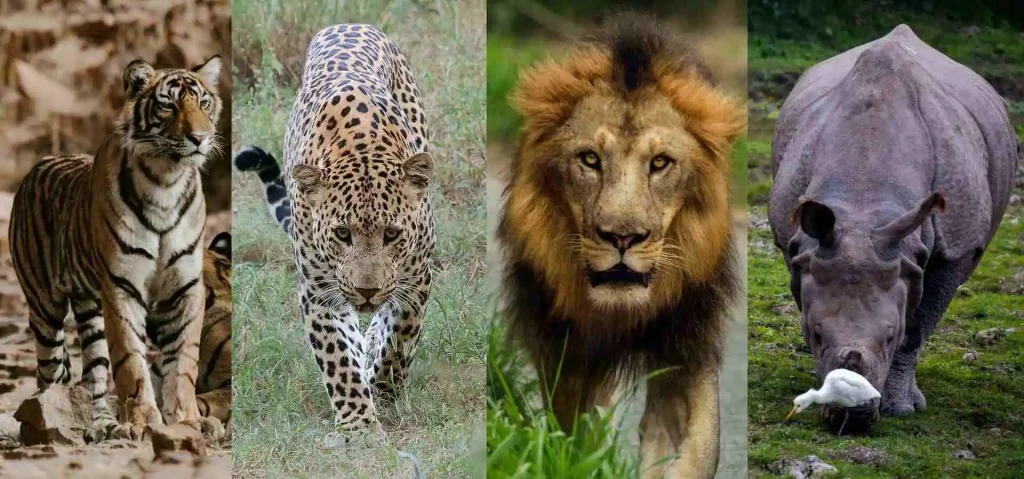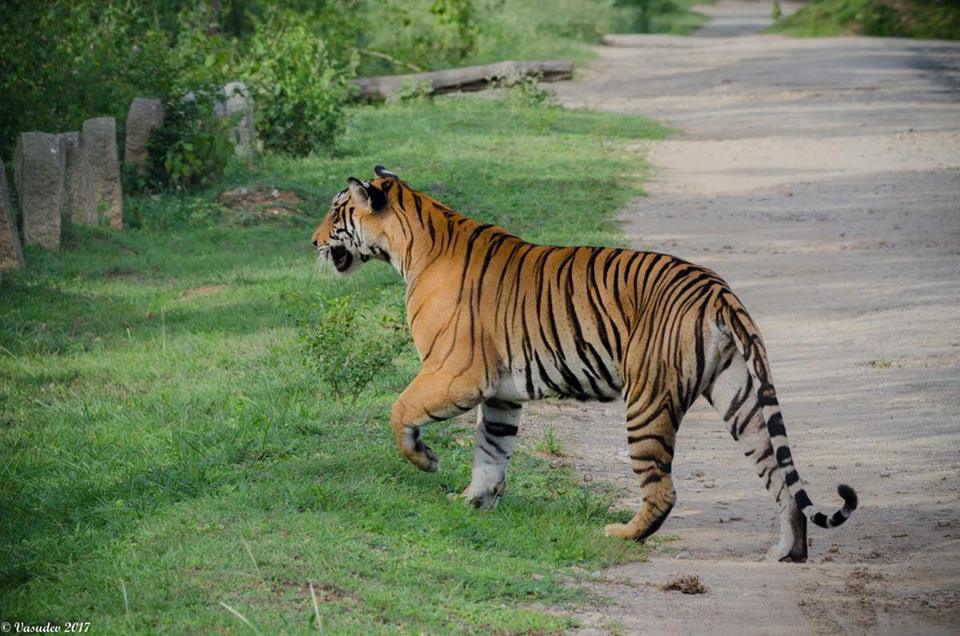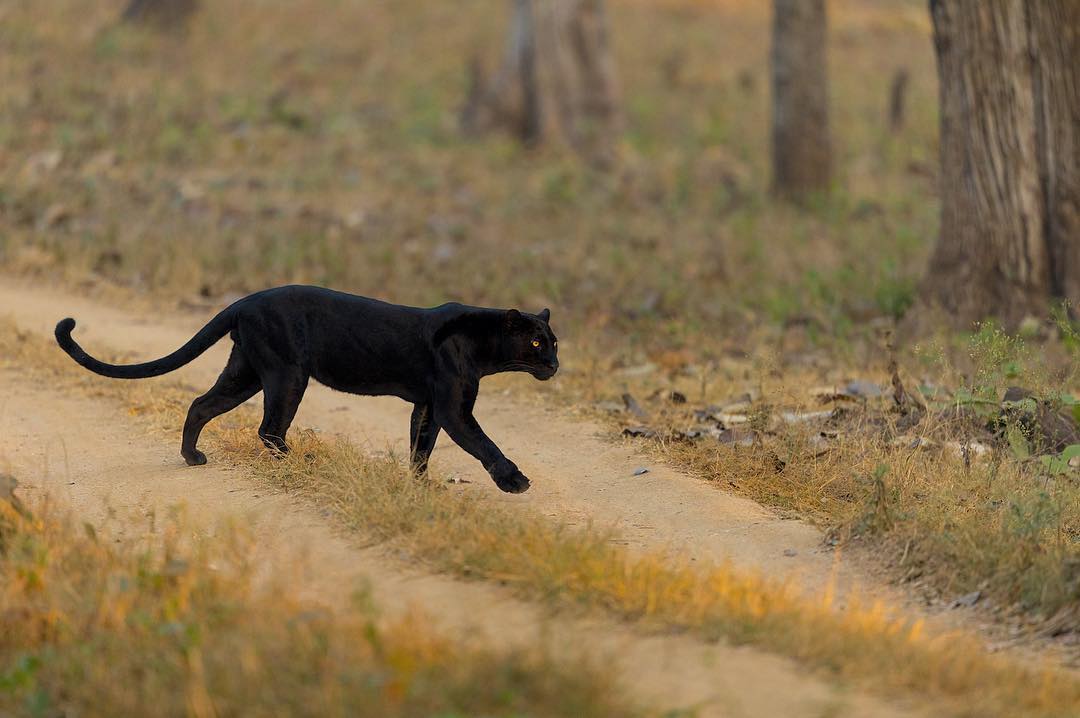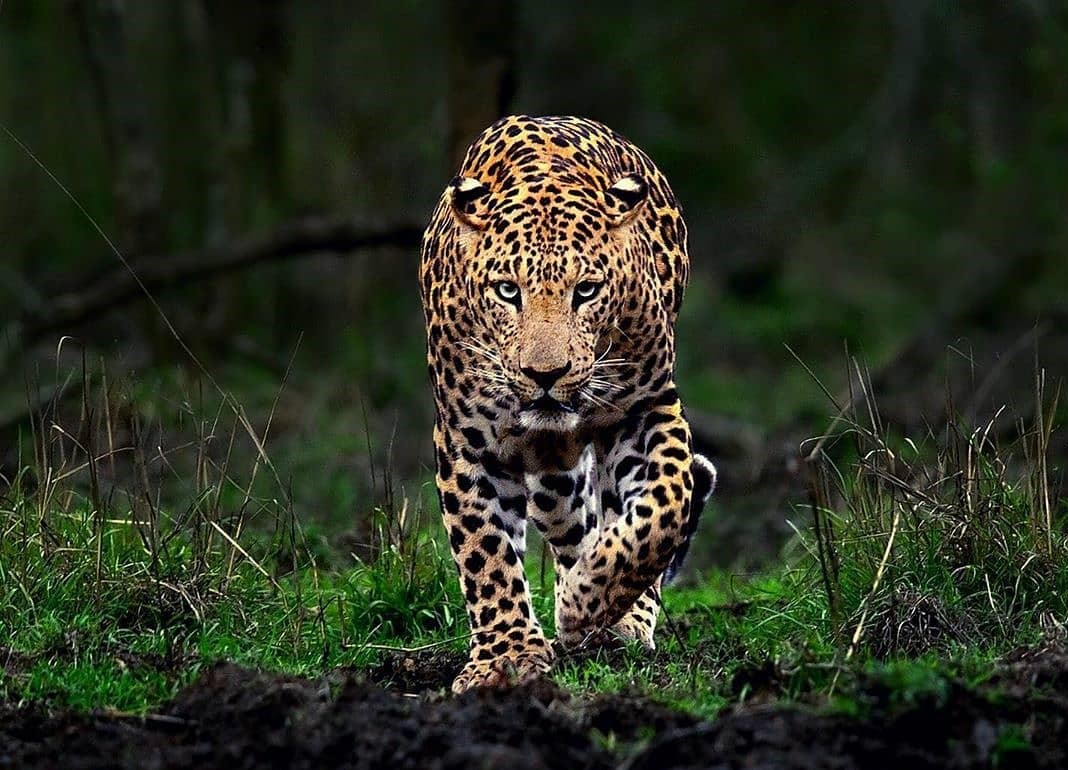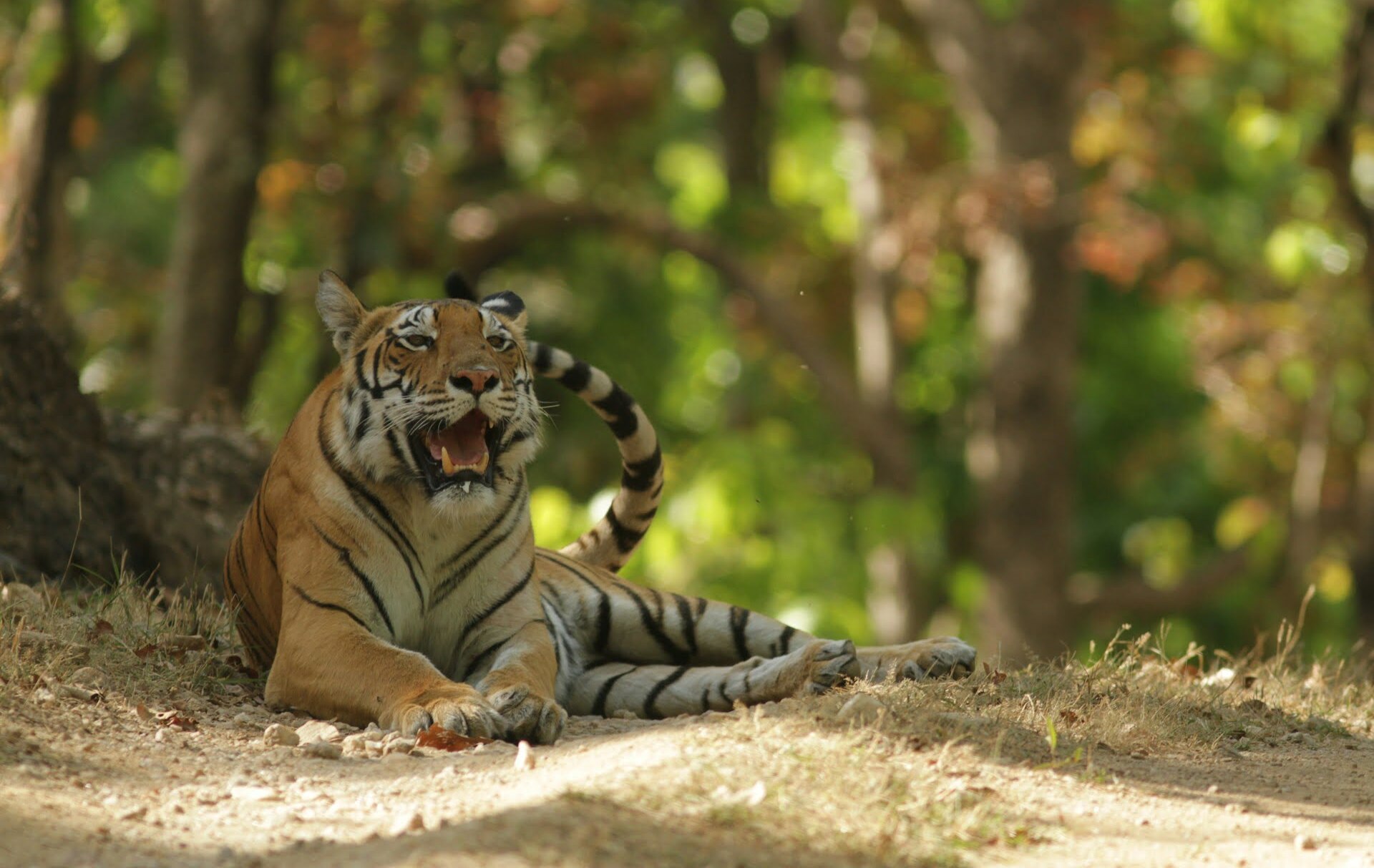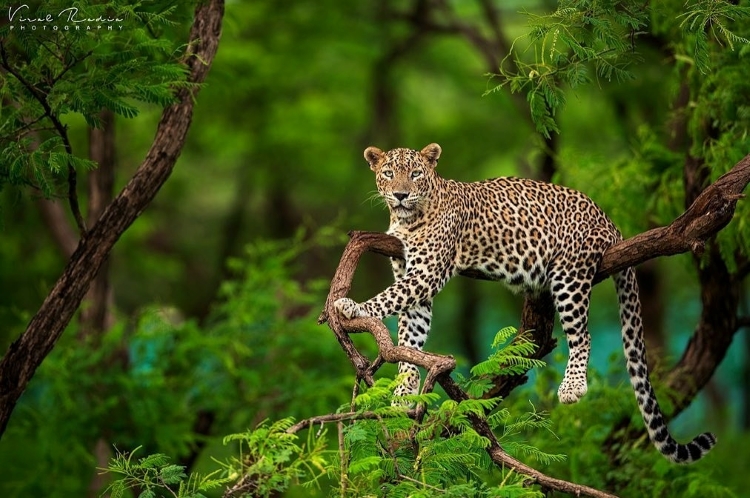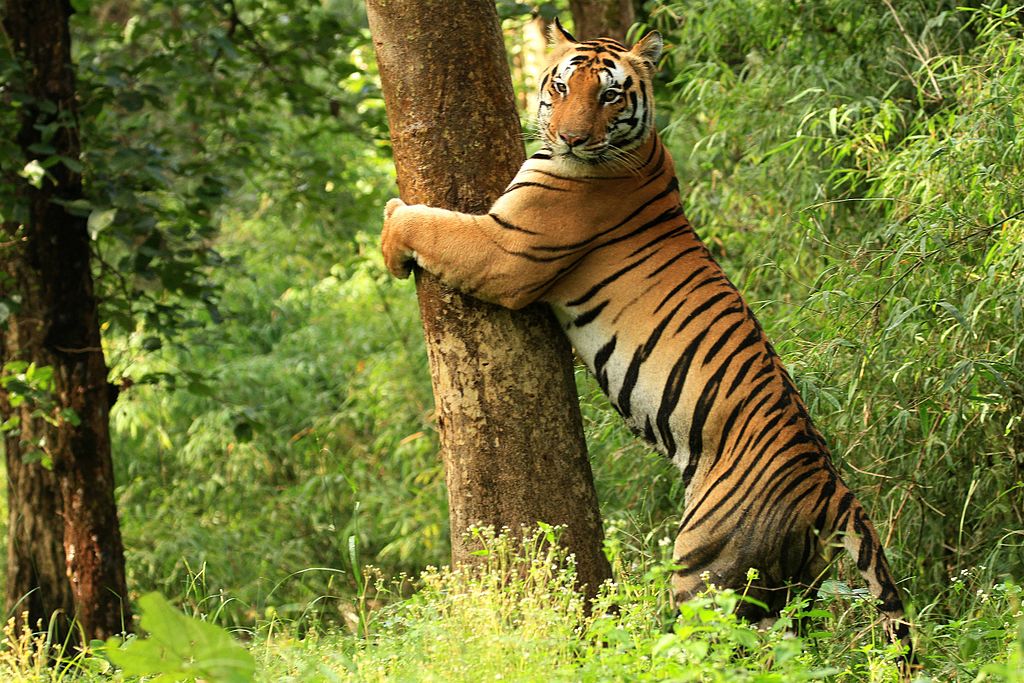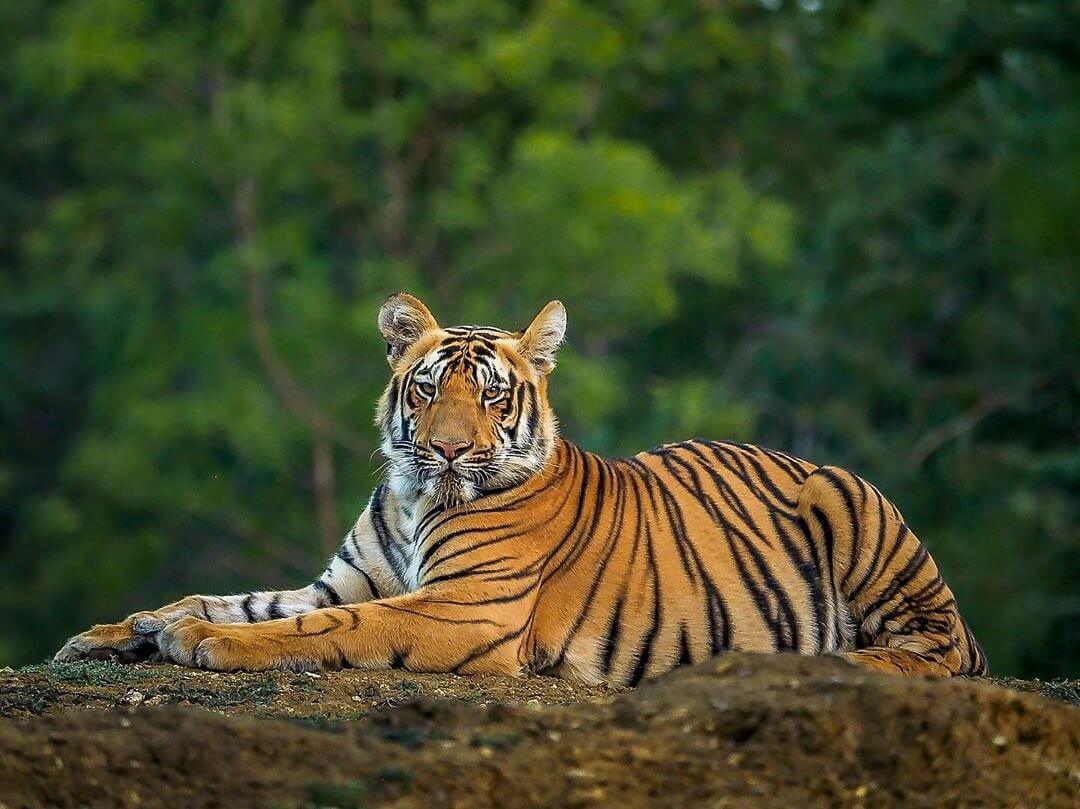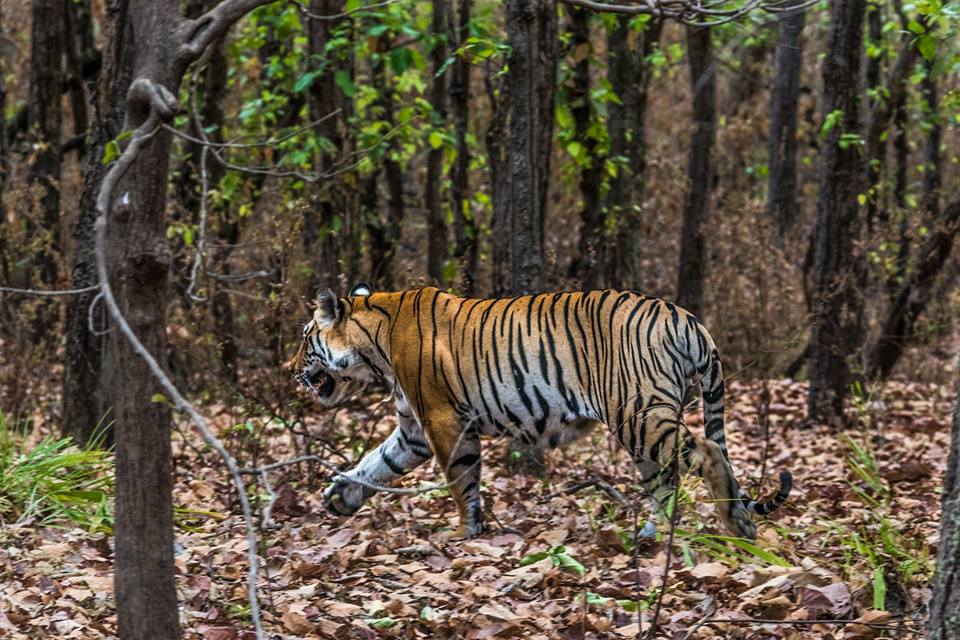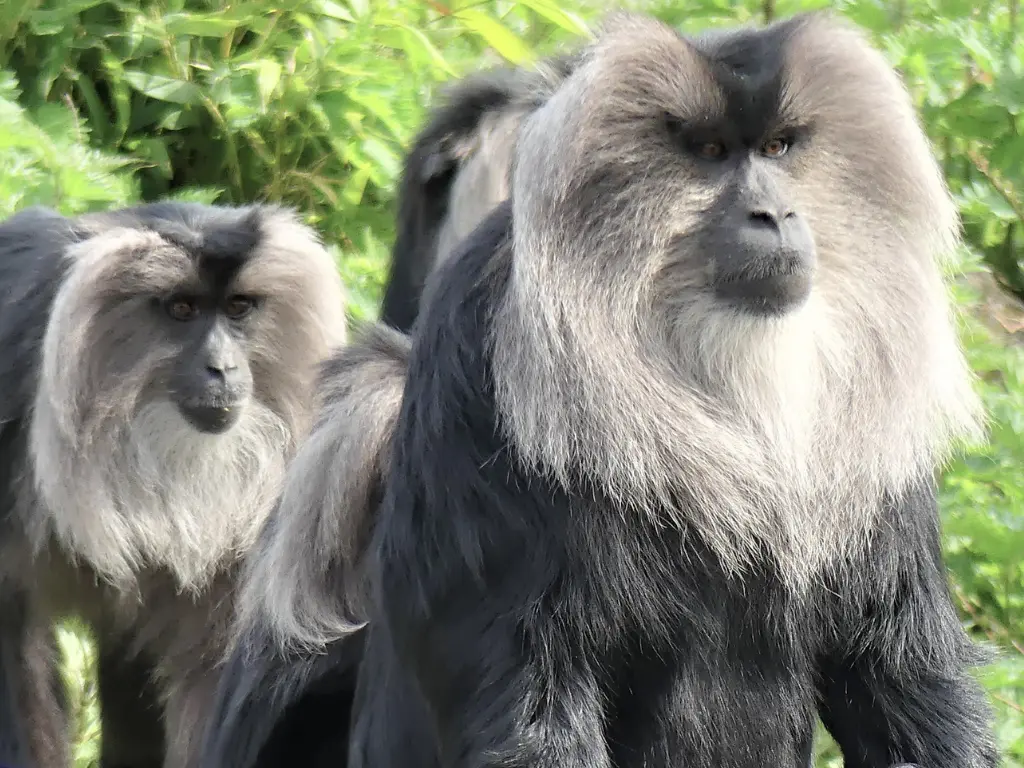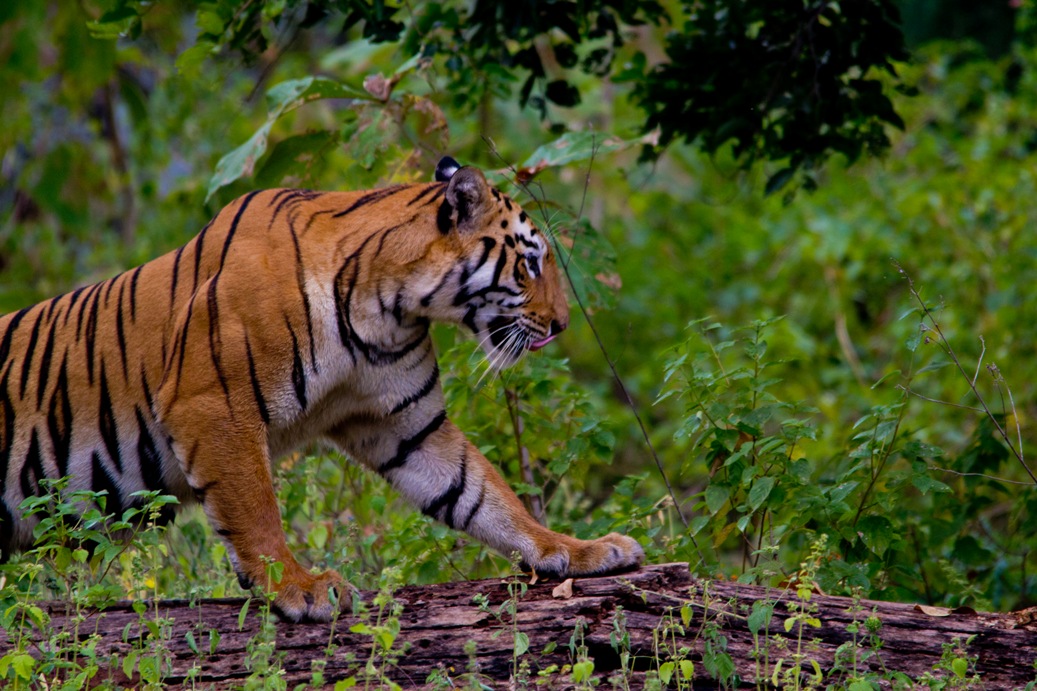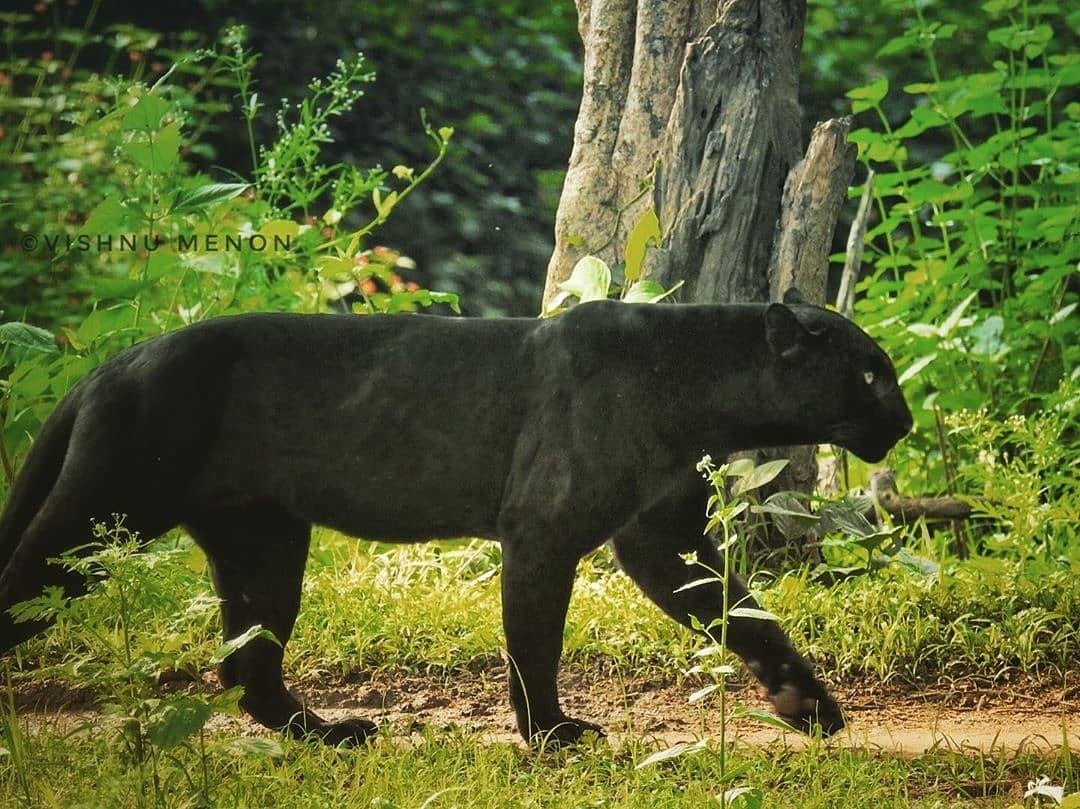Bandhavgarh is famous for its tigers, but if you look up, you’ll see a whole different world—one filled with vibrant, chirping, and soaring birds. This national park is home to a diverse range of bird species, making it a fantastic spot for birdwatchers. Whether you’re an avid birder or just someone who loves nature, here are some fascinating birds you can spot in Bandhavgarh.
Commonly Found Birds in Bandhavgarh
Red-vented Bulbul
Scientific Name: Pycnonotus cafer
Lively and vocal, the Red-vented Bulbul is often seen in pairs or small groups, hopping between branches or calling from treetops. Its black crest and red patch under the tail are easy giveaways.
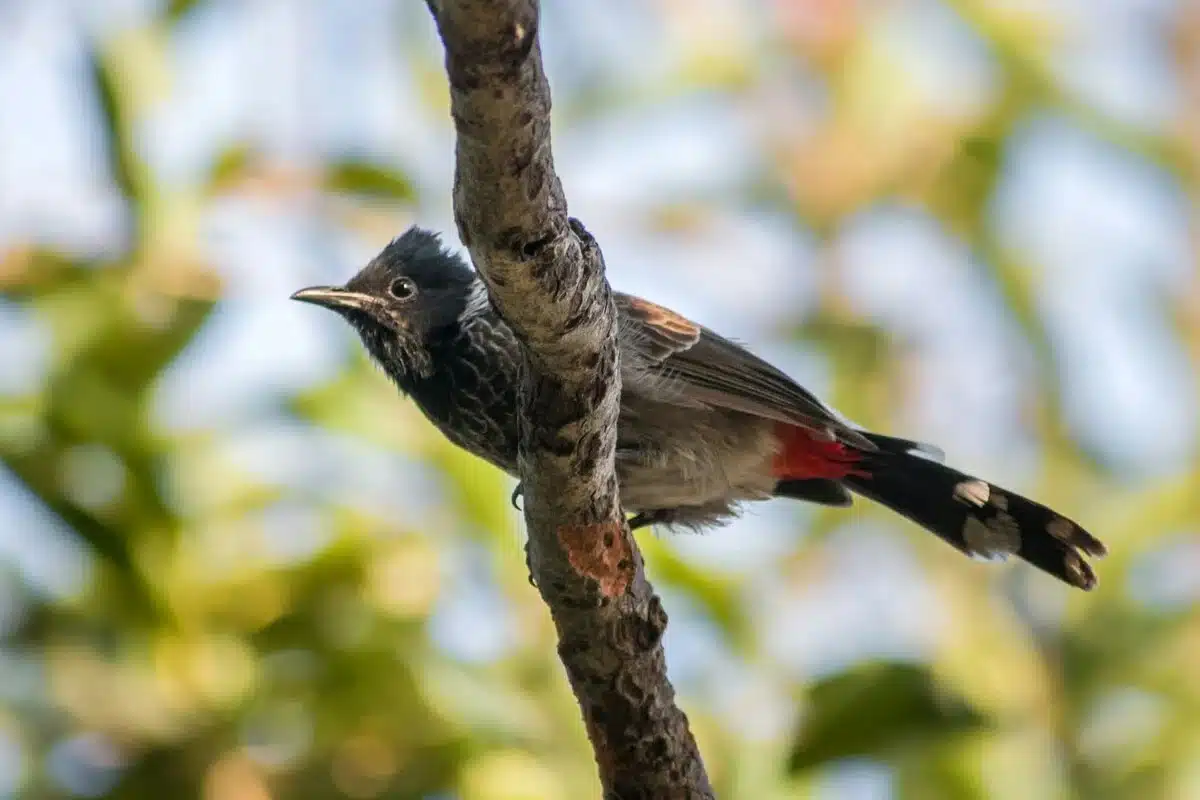
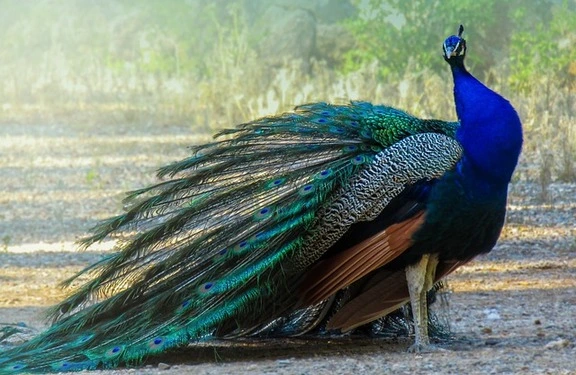
Indian Peafowl
Scientific Name: Pavo cristatus
India’s national bird, the Indian Peafowl, is a showstopper during the monsoon when males perform elaborate dances to attract mates. They’re commonly seen around villages, fields, and forest edges.
Common Kingfisher
Scientific Name: Alcedo atthis
A flash of electric blue near water—this tiny kingfisher is a treat to spot. It perches silently before diving headfirst to catch small fish or tadpoles in a blink.

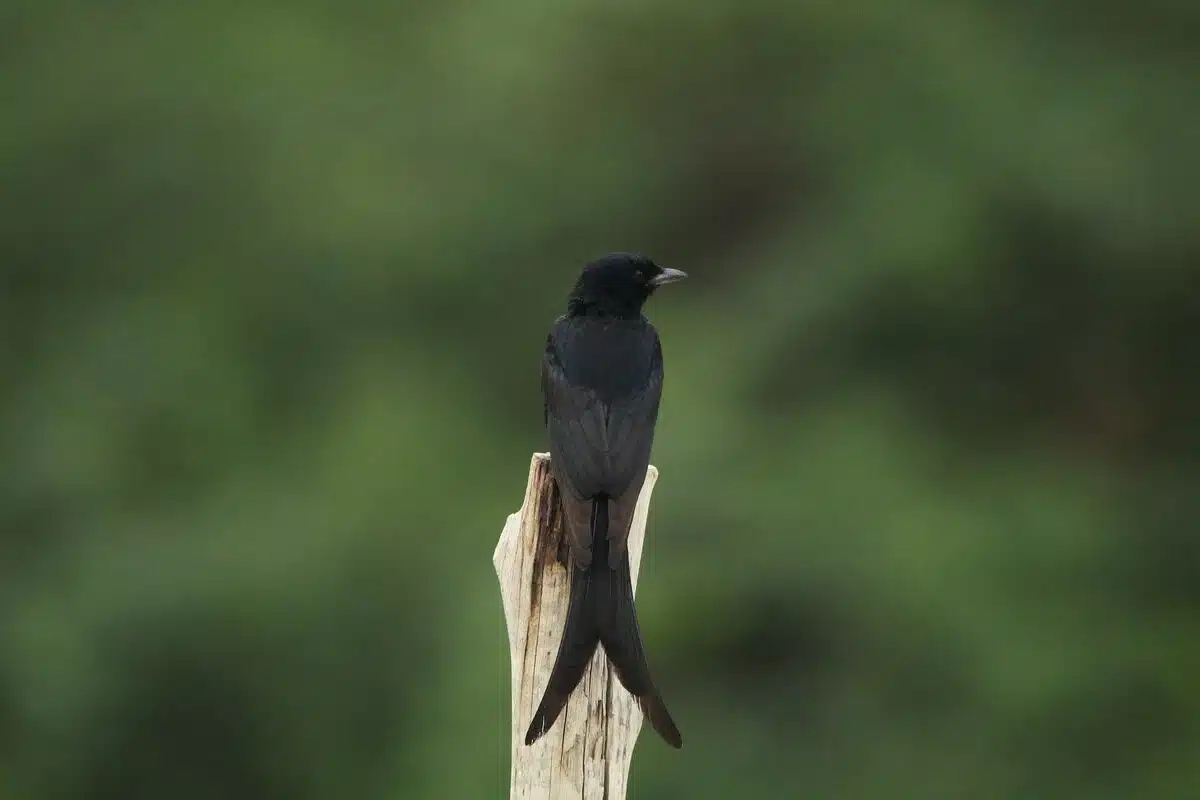
Black Drongo
Scientific Name: Dicrurus macrocercus
Fearless and acrobatic, the Black Drongo is a farmer’s friend, often seen chasing away larger birds. Its glossy black plumage and deeply forked tail make it easy to identify.
Indian Roller
Scientific Name: Coracias benghalensis
Often spotted on wires or tree branches, the Indian Roller is famous for its vivid blue wings. During flight, the bright blues catch the light beautifully—especially in the breeding season.
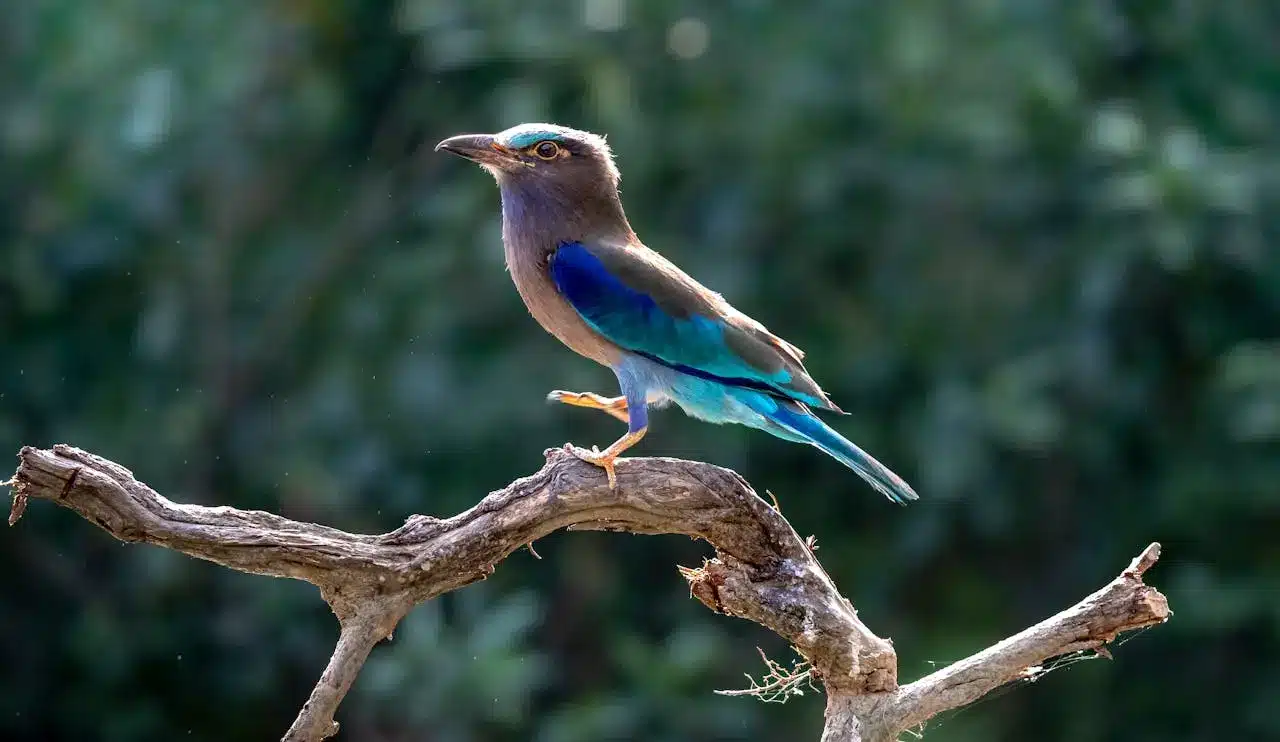
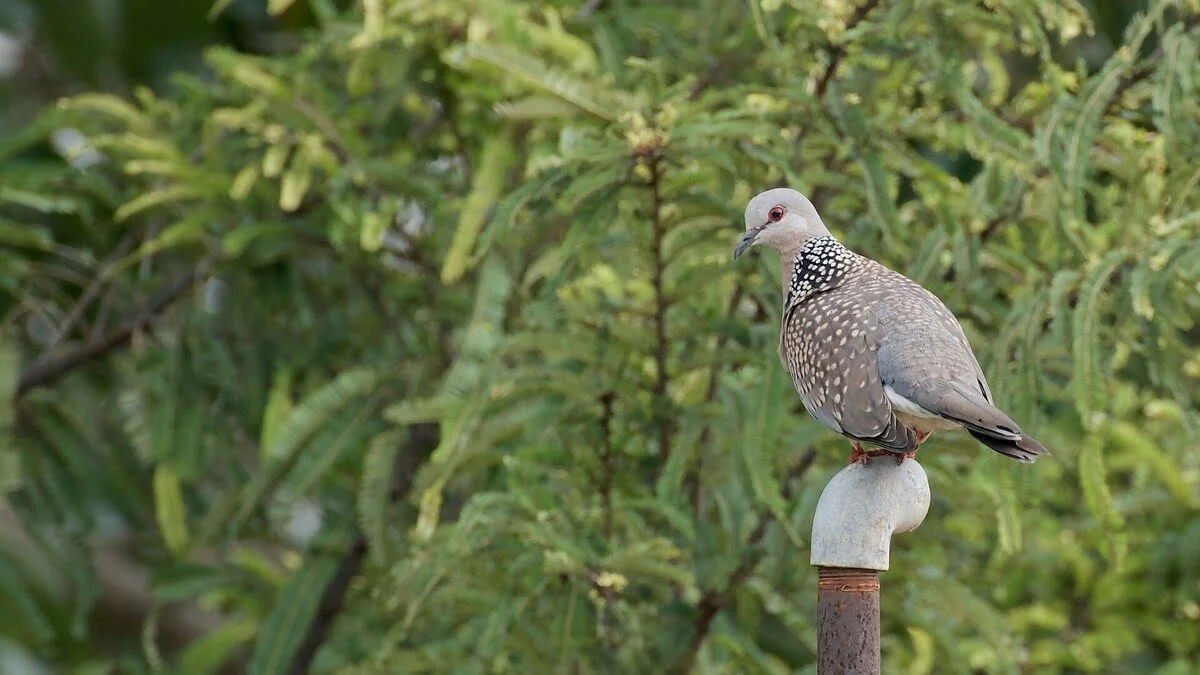
Spotted Dove
Scientific Name: Spilopelia chinensis
A symbol of peace, the Spotted Dove is commonly seen foraging on the ground in wooded areas. Its soft cooing calls and distinct spotted neck pattern make it easy to recognize.
Green Bee-eater
Scientific Name: Merops orientalis
Slim and colorful, this bee-eater is often seen in open fields, catching insects mid-air. Its emerald green body, long tail streamers, and red eyes make it a visual delight.
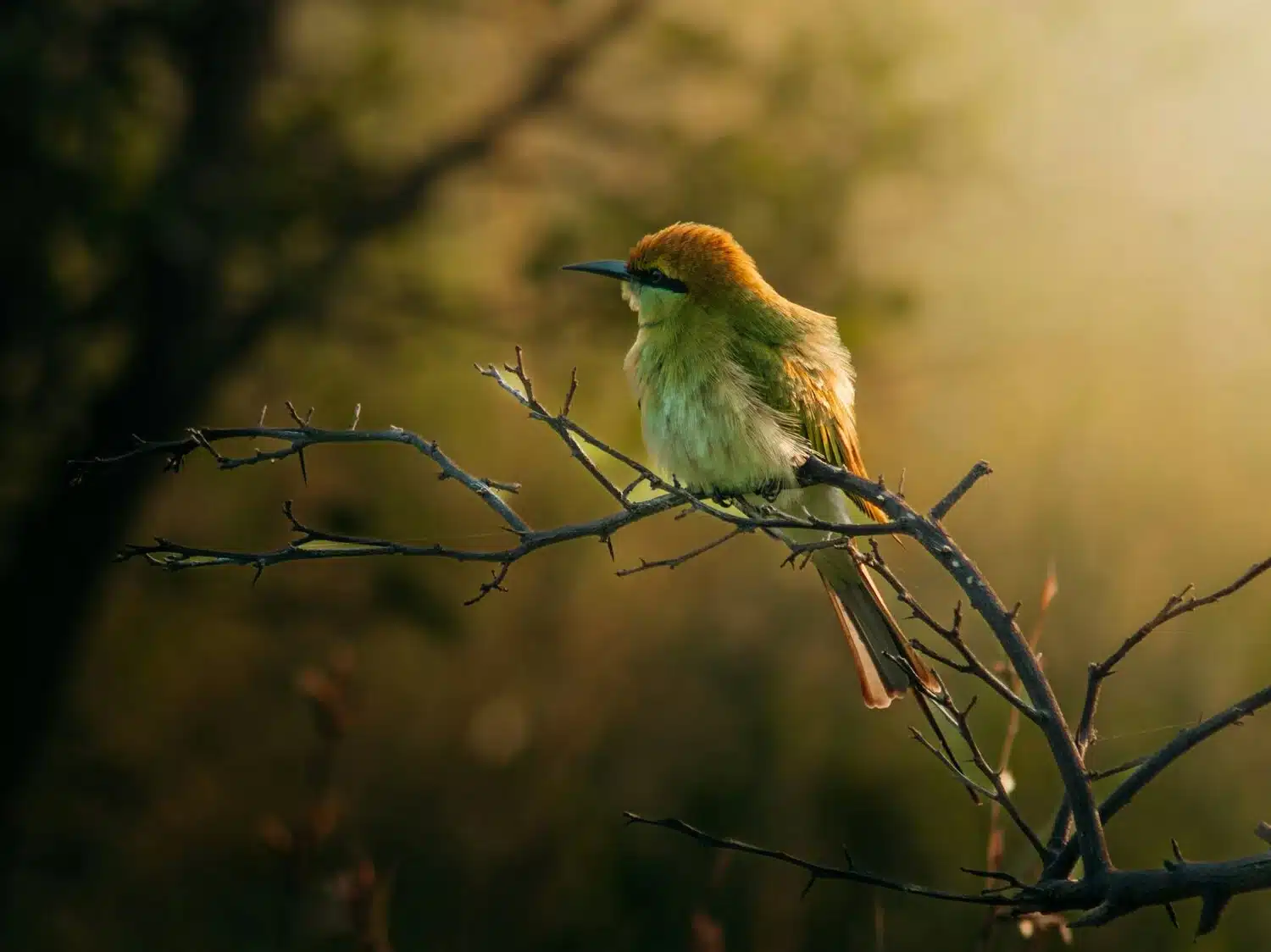
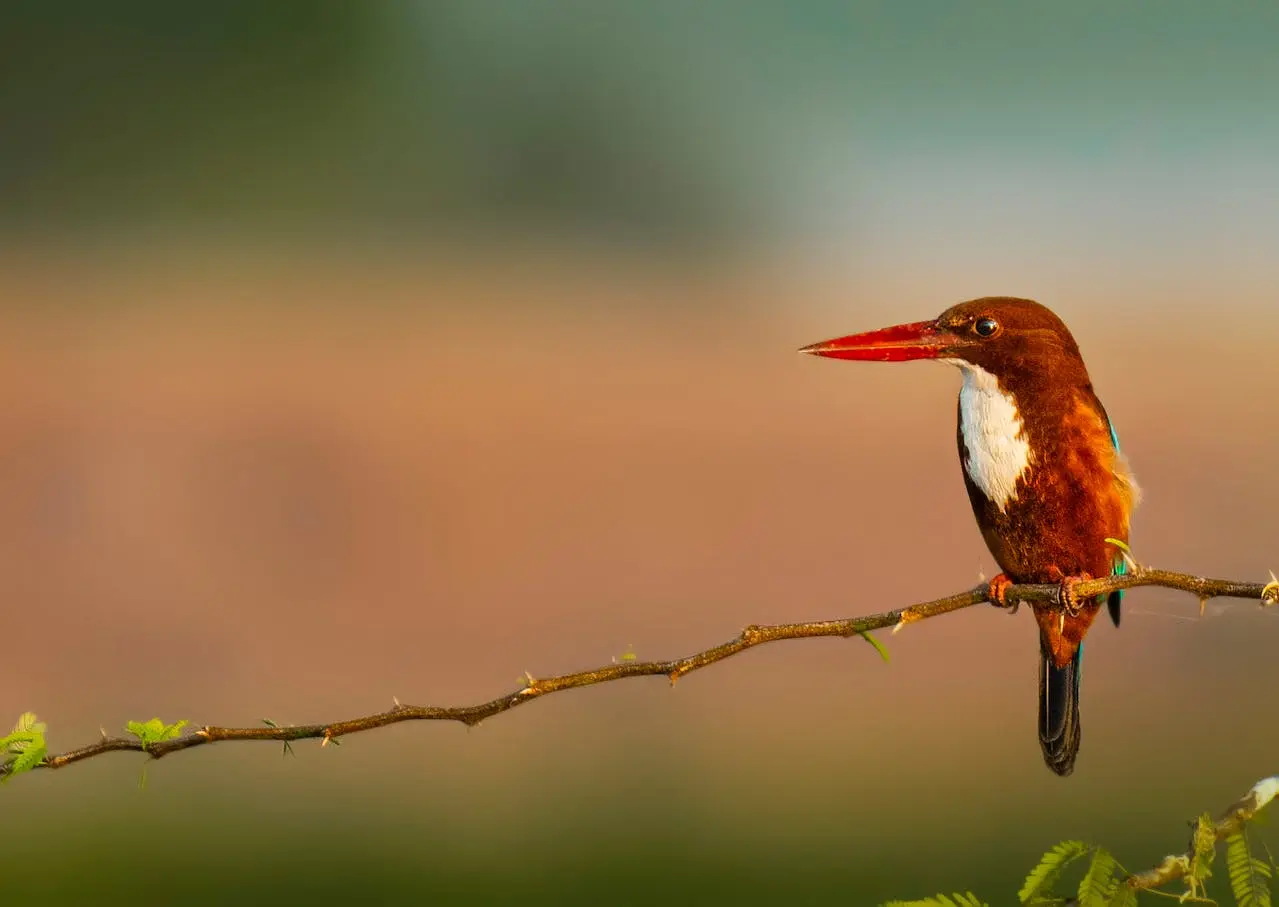
White-throated Kingfisher
Scientific Name: Halcyon smyrnensis
With a bright turquoise back and a deep chestnut head, this kingfisher isn’t just near water. It’s a bold hunter of insects, frogs, and even small reptiles—often spotted loudly calling from exposed perches.
Additional Common Birds of Bandhavgarh
- Jungle Babbler (Argya striata)
- Coppersmith Barbet (Psilopogon haemacephalus)
- Rufous Treepie (Dendrocitta vagabunda)
- Common Iora (Aegithina tiphia)
- Indian Grey Hornbill (Ocyceros birostris)
- Asian Koel (Eudynamys scolopaceus)
- Laughing Dove (Spilopelia senegalensis)
- Lesser Golden-backed Woodpecker (Dinopium benghalense)
- Indian Robin (Copsychus fulicatus)
- Brahminy Starling (Sturnia pagodarum)
- Common Myna (Acridotheres tristis)
- Large Cuckooshrike (Coracina macei)
- Black-hooded Oriole (Oriolus xanthornus)
- Little Egret (Egretta garzetta)
- Purple Sunbird (Cinnyris asiaticus)
- Oriental Magpie-Robin (Copsychus saularis)
- Ashy Prinia (Prinia socialis)
- Common Tailorbird (Orthotomus sutorius)
- Yellow-eyed Babbler (Chrysomma sinense)
- Shikra (Accipiter badius)
- White-browed Fantail (Rhipidura aureola)
- Spotted Owlet (Athene brama)
- Greater Coucal (Centropus sinensis)
- House Sparrow (Passer domesticus)
- Rose-ringed Parakeet (Psittacula krameri)
- Indian Pond Heron (Ardeola grayii)
- Red-wattled Lapwing (Vanellus indicus)
Migrant Birds in Bandhavgarh
Black Redstart
Scientific Name: Phoenicurus ochruros
A winter visitor, this small bird often flicks its tail while perching on rocks or low walls. Males have sooty grey-black plumage with a reddish tail that flashes when it moves.
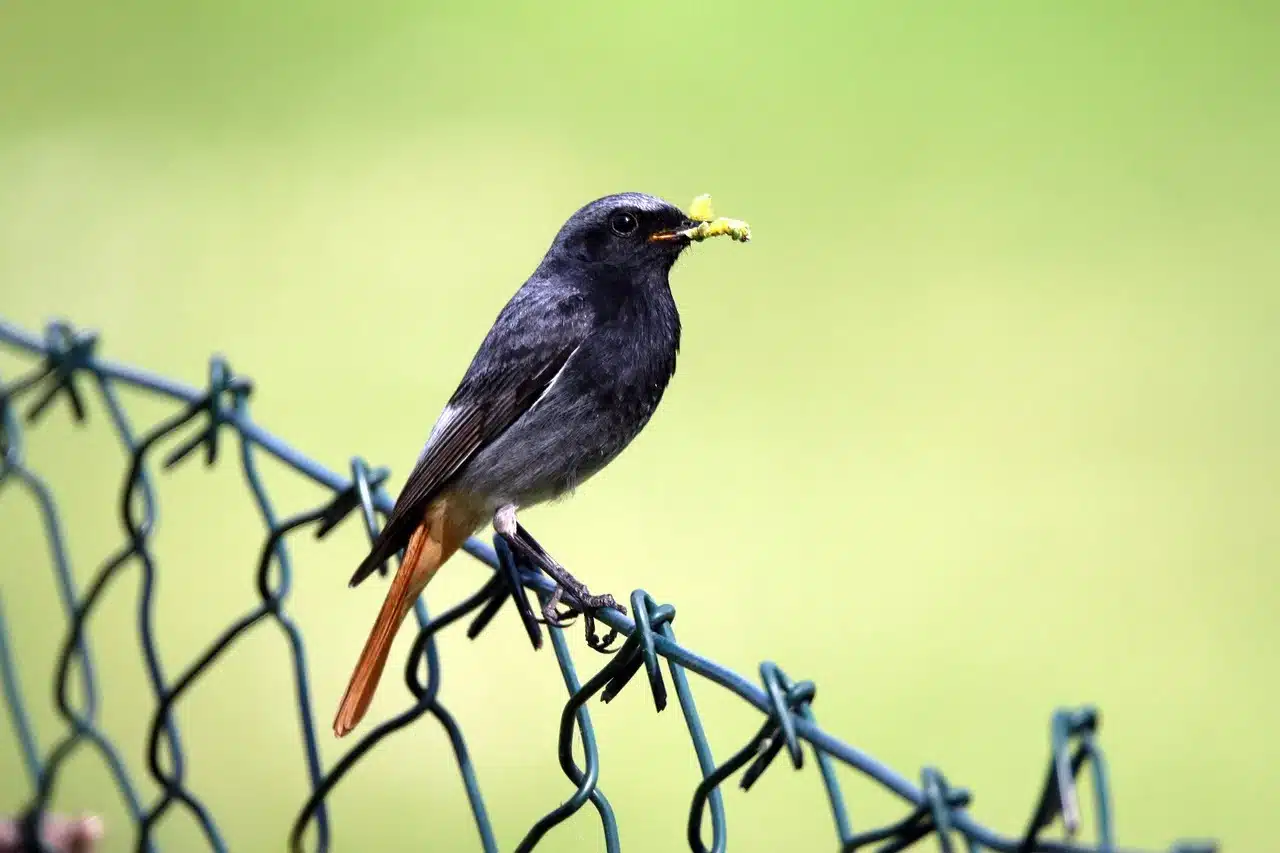
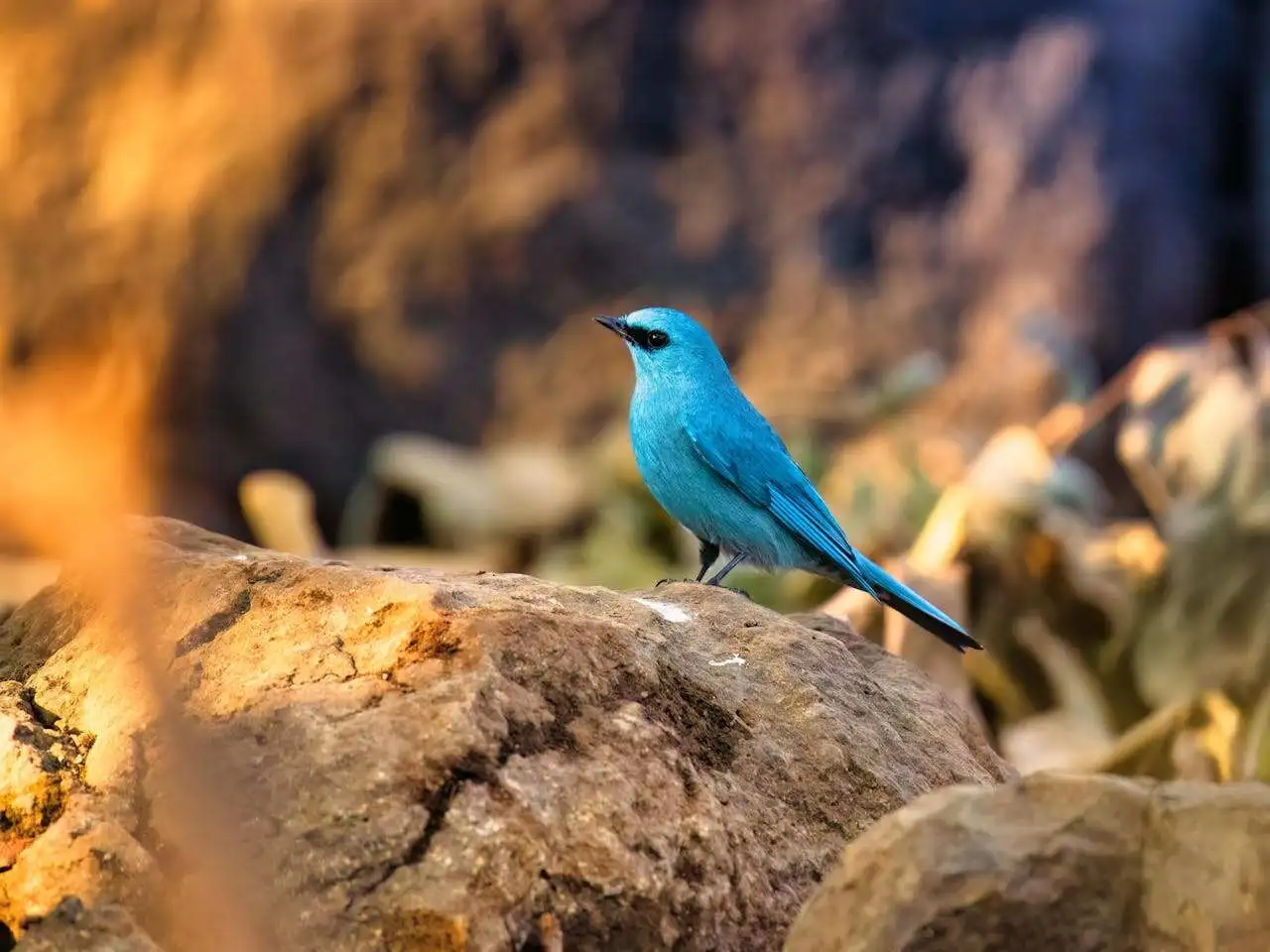
Verditer Flycatcher
Scientific Name: Eumyias thalassinus
Strikingly blue and hard to miss, the Verditer Flycatcher prefers forest edges and clearings. It often perches alone, gracefully darting out to catch insects in flight.
Common Teal
Scientific Name: Anas crecca
One of the smallest dabbling ducks, the Common Teal visits Bandhavgarh’s water bodies in winter. Males sport a chestnut head with a bold green eye patch—easy to spot with binoculars.


Rosy Starling
Scientific Name: Pastor roseus
Arriving in large flocks, these seasonal visitors love feeding on berries and insects. With pink bodies and glossy black heads, they stand out in grasslands and open fields.
Ultramarine Flycatcher
Scientific Name: Ficedula superciliaris
This tiny migrant is a forest gem. Males wear a stunning blue and white coat and are often seen flitting through sal forests, especially early in the morning.
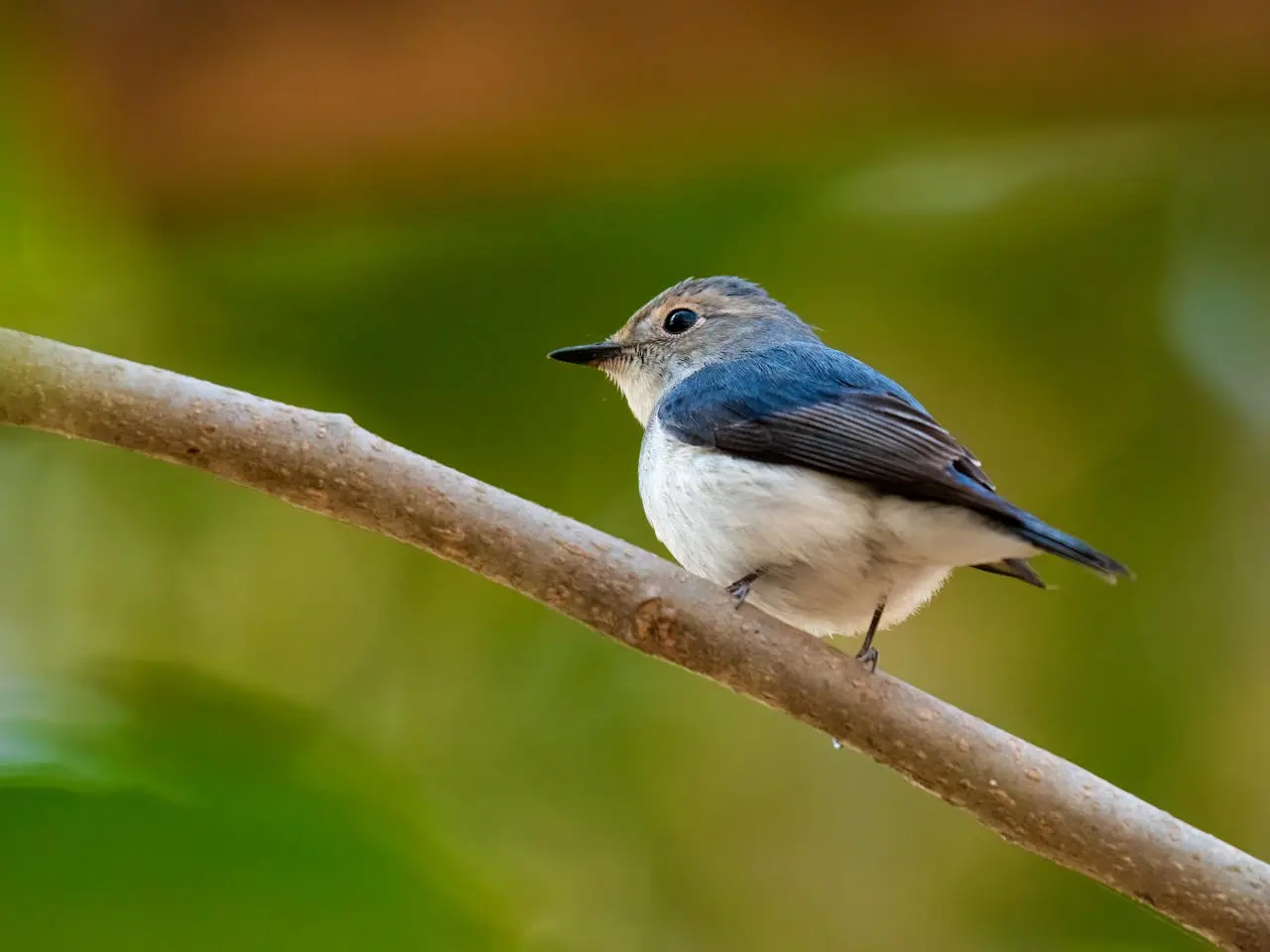
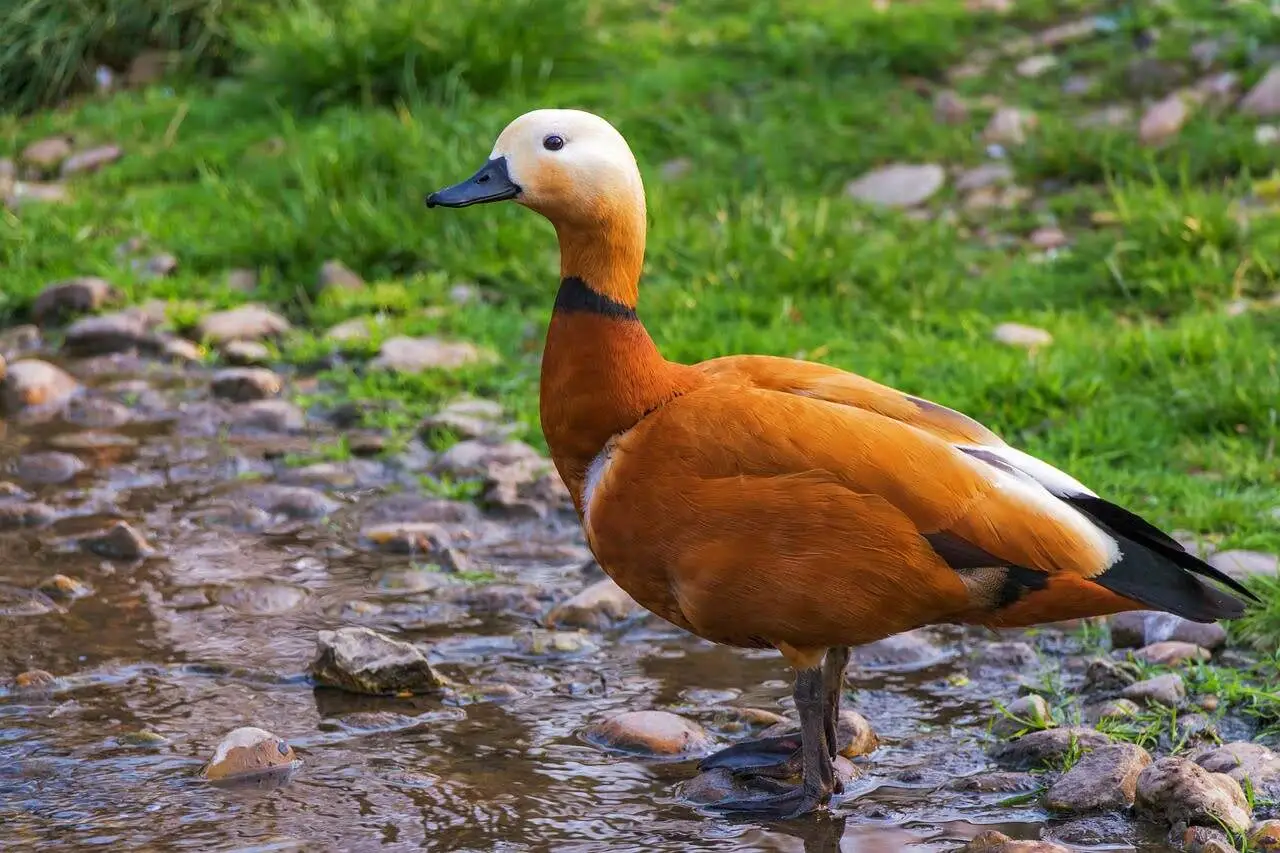
Ruddy Shelduck
Scientific Name: Tadorna ferruginea
Also known as the Brahminy Duck, this large orange-brown duck is usually seen in pairs. Its loud honking calls echo near lakes and wetlands during winter.
Northern Shoveler
Scientific Name: Anas clypeata
Known for its oversized spoon-shaped bill, the Northern Shoveler filters water for food. Males have striking green heads and chestnut sides, often spotted in mixed flocks.
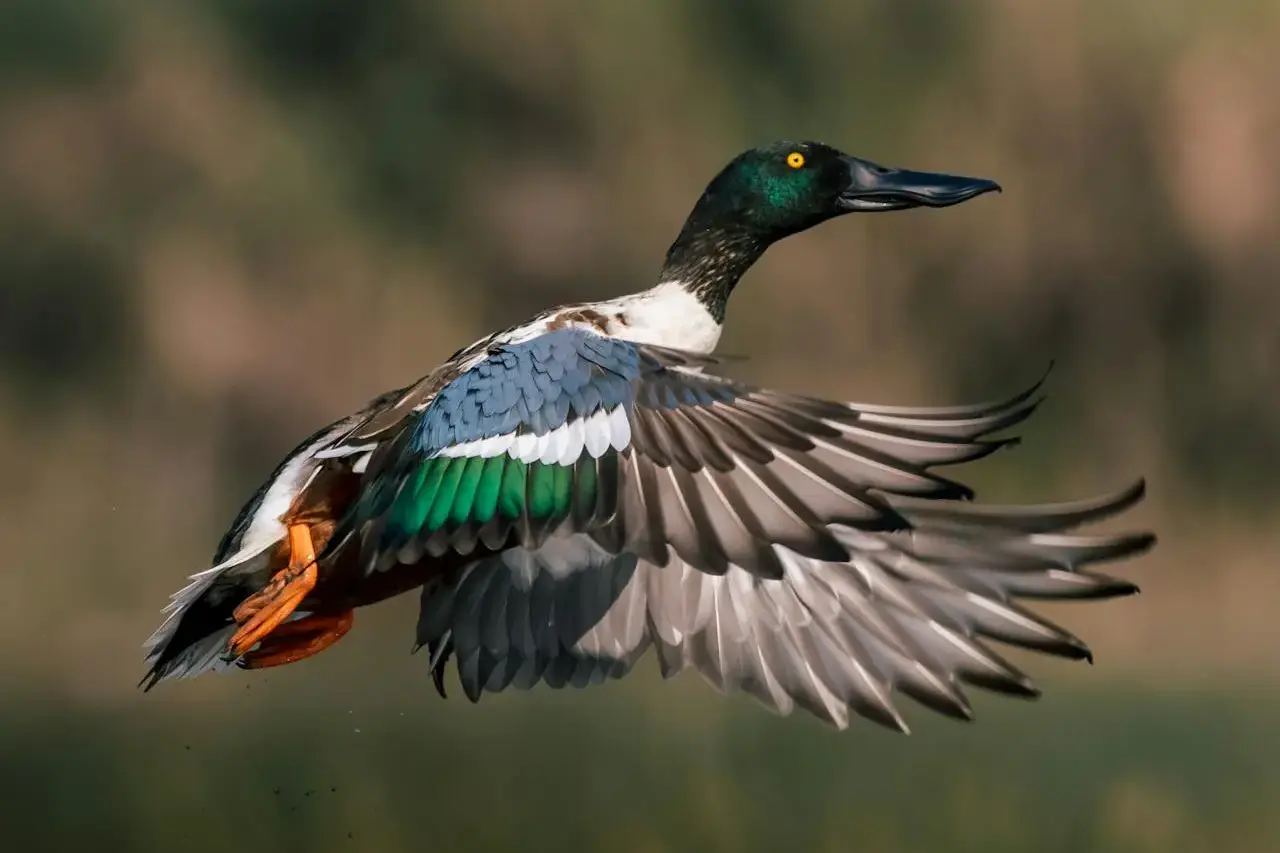
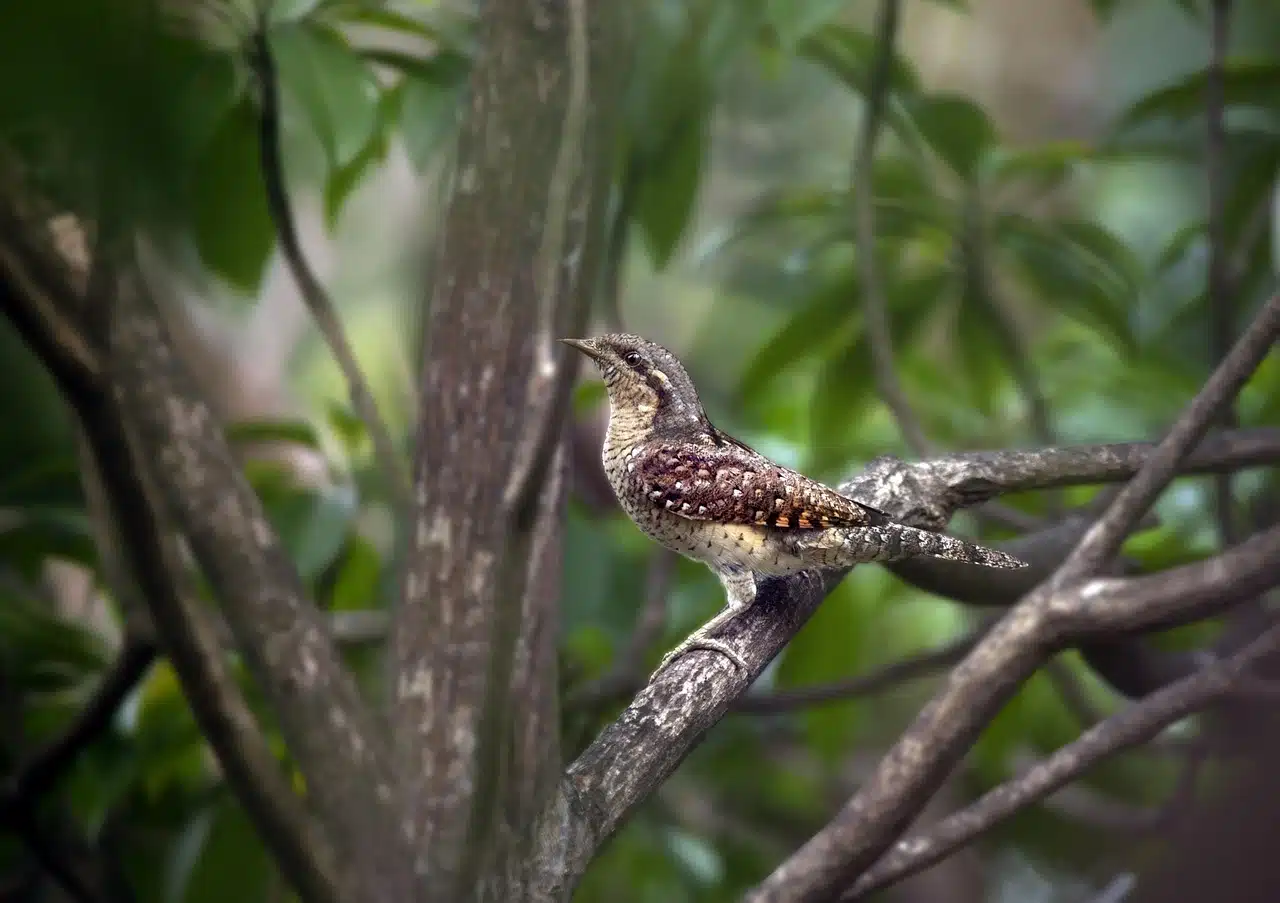
Eurasian Wryneck
Scientific Name: Jynx torquilla
A master of camouflage, the Wryneck is a rare woodpecker that looks nothing like one. It prefers dry woodland and is more often heard than seen—unless you’re lucky.
More List of Migratory Birds in Bandhavgarh
- Pied Thrush (Geokichla wardii)
- Verditer Flycatcher (Eumyias thalassinus)
- Ultramarine Flycatcher (Ficedula superciliaris)
- Black Redstart (Phoenicurus ochruros)
- Rosy Starling (Pastor roseus)
- Common Teal (Anas crecca)
- Northern Shoveler (Spatula clypeata)
- Eurasian Wryneck (Jynx torquilla)
- Brown Shrike (Lanius cristatus)
- Booted Warbler (Iduna caligata)
- Blyth’s Reed Warbler (Acrocephalus dumetorum)
- Greenish Warbler (Phylloscopus trochiloides)
- Taiga Flycatcher (Ficedula albicilla)
- Indian Paradise Flycatcher – Migratory Form (Terpsiphone paradisi)
- Bar-headed Goose (Anser indicus)
- Ruddy Shelduck (Tadorna ferruginea)
- Steppe Eagle (Aquila nipalensis)
- Marsh Harrier (Circus aeruginosus)
- Osprey (Pandion haliaetus)
Rare or Less Frequently Seen Birds in Bandhavgarh
Blue-bearded Bee-eater
Scientific Name: Nyctyornis athertoni
The largest of the bee-eaters, this shy forest bird has a distinctive “beard” of blue feathers. Often spotted alone, perched quietly deep inside forest canopies.
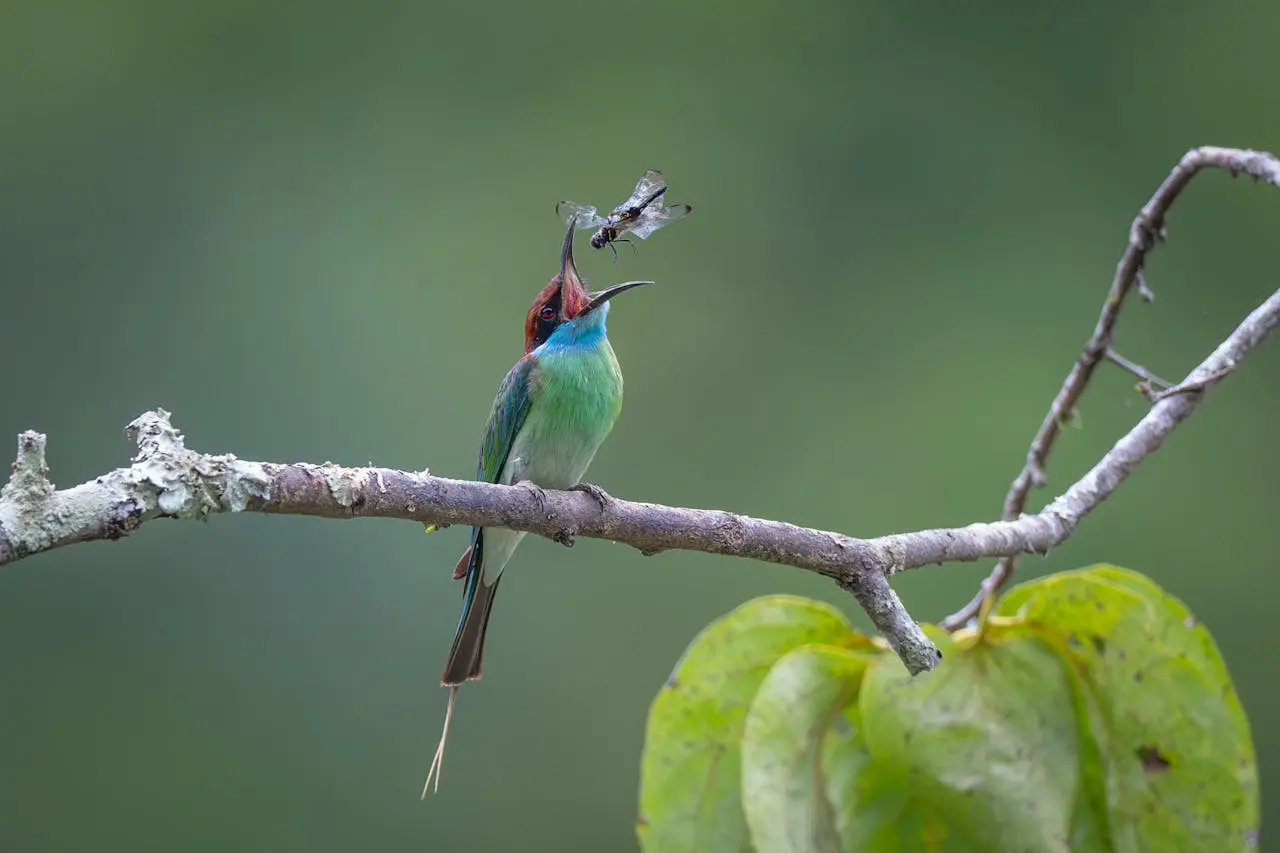
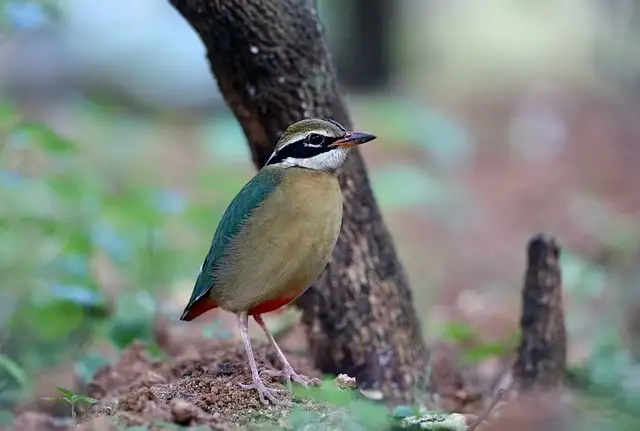
Indian Pitta
Scientific Name: Pitta brachyura
A burst of color on the forest floor, the Indian Pitta is nicknamed the “Nine-colored Bird.” It’s most often seen during migration, flicking its tail and giving a sharp, two-note call.
Oriental Dwarf Kingfisher
Scientific Name: Ceyx erithaca
This tiny, jewel-like bird is a dream sighting. Bright orange and violet with a coral red bill, it darts through dense forest near streams—if you’re lucky enough to spot it.
Read More About Orieantal Dwarf Kingfisher
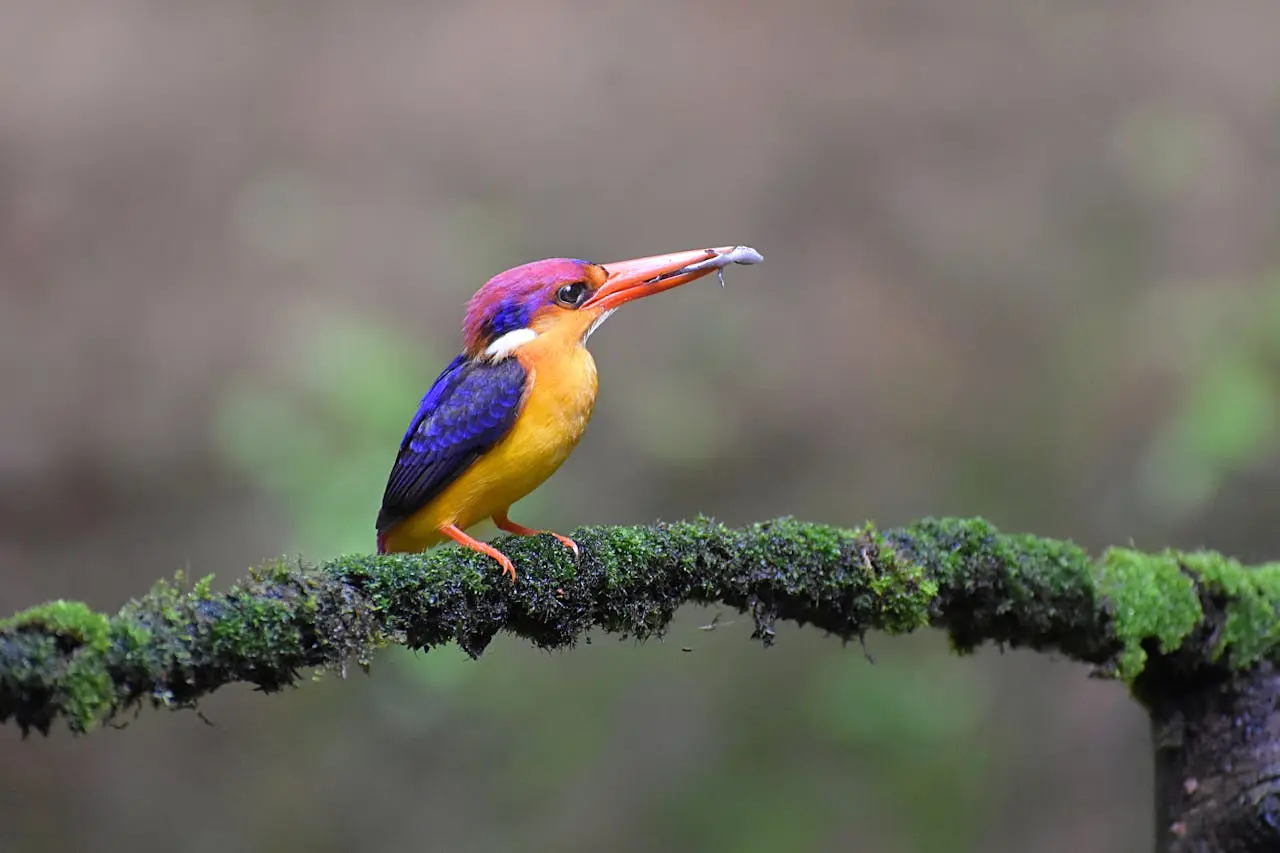
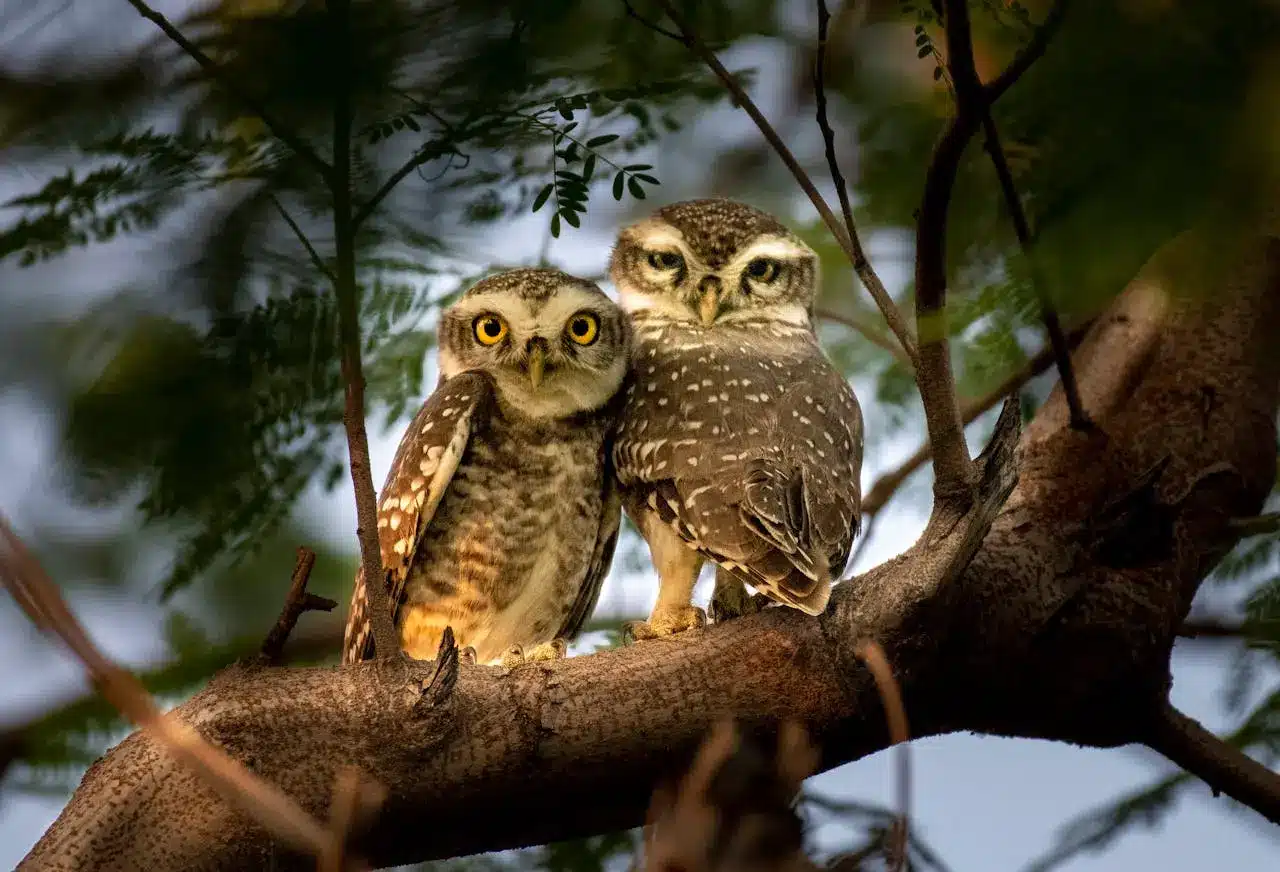
Forest Owlet
Scientific Name: Heteroglaux blewitti
One of the rarest owls in India, the Forest Owlet was once thought extinct. Extremely elusive and found in dense patches of forest, it’s a prized sighting for serious birders.
Jerdon’s Leafbird
Scientific Name: Chloropsis jerdoni
Perfectly camouflaged among leaves, this bright green bird is more often heard than seen. Its rich warbling call and flashes of blue near the throat give it away.
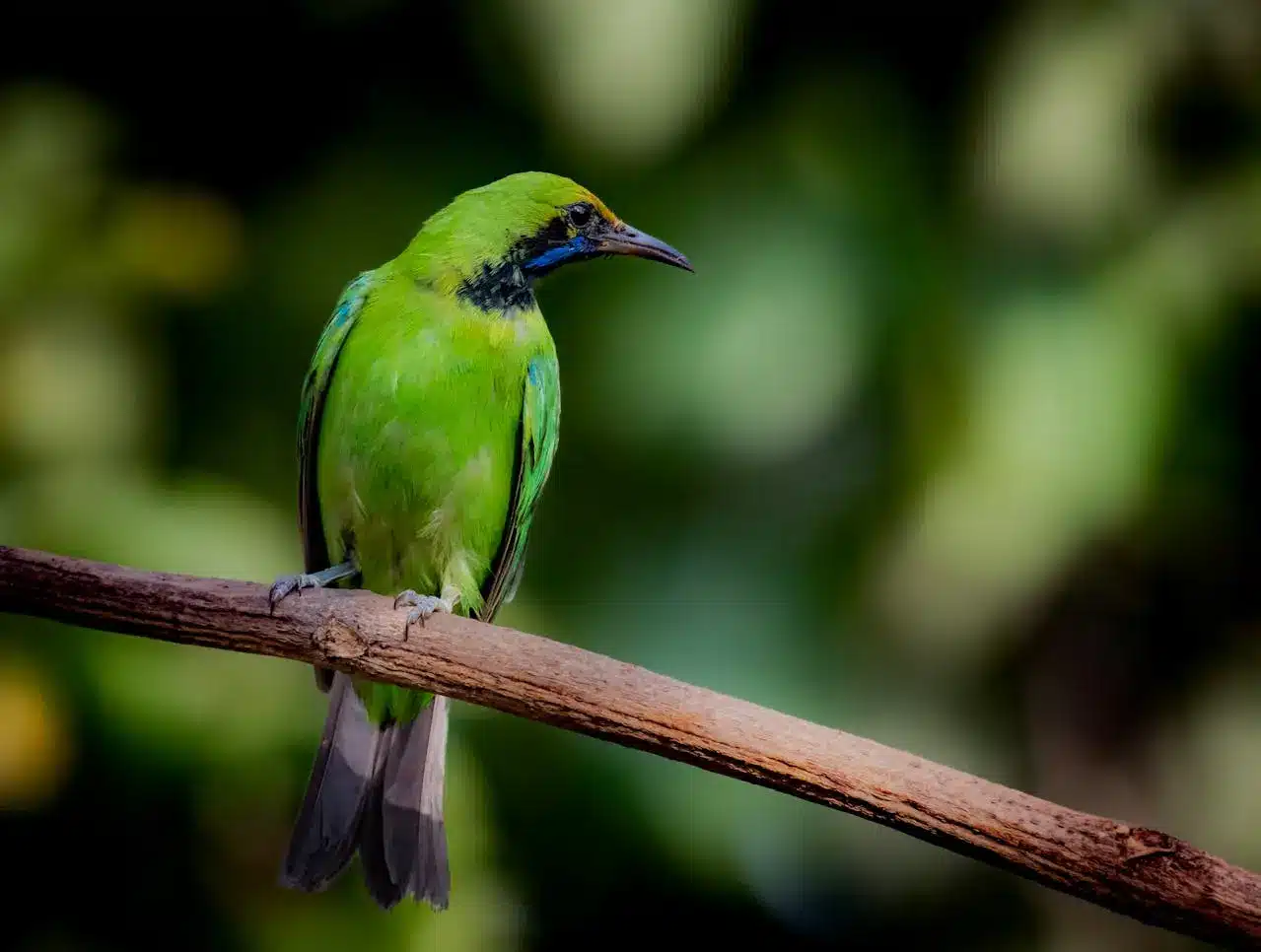
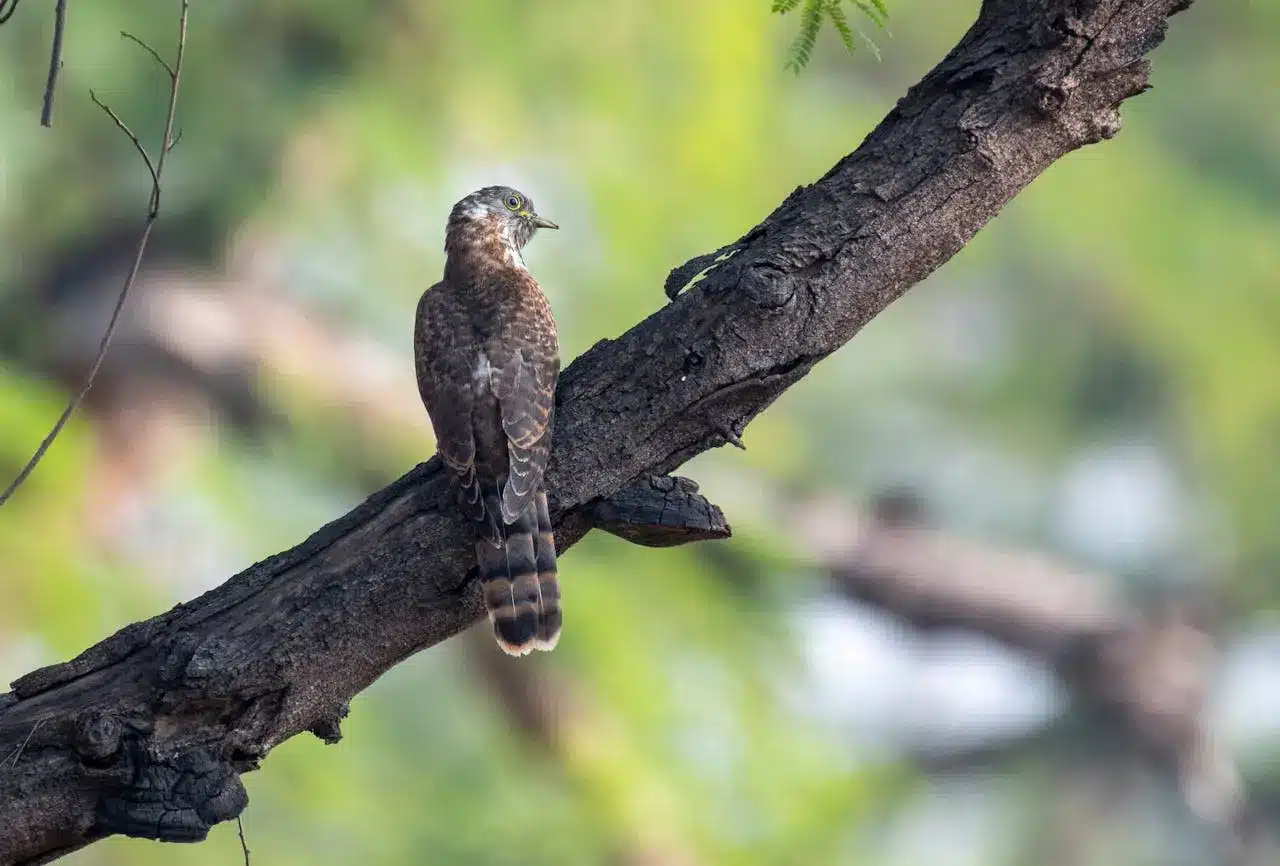
Indian Cuckoo
Scientific Name: Cuculus micropterus
A master mimic, this cuckoo is known for its haunting, flute-like “bo-ko-ta-ko” call. It stays high in the canopy and is very shy—more a song than a sight.
More Rarely Found Birds in Bandhavgarh
- Slaty-legged Crake (Rallina eurizonoides)
- Sirkeer Malkoha (Taccocua leschenaultii)
- Rusty-tailed Flycatcher (Ficedula ruficauda)
- White-naped Woodpecker (Chrysocolaptes festivus)
- Brown Fish Owl (Ketupa zeylonensis)
- Barred Buttonquail (Turnix suscitator)
- Common Hawk-Cuckoo (Brainfever Bird) (Hierococcyx varius)
- Yellow-crowned Woodpecker (Leiopicus mahrattensis)
- Greater Painted-snipe (Rostratula benghalensis)
- Lesser Adjutant Stork (Leptoptilos javanicus)
- White-bellied Drongo (Dicrurus caerulescens)
- Indian Scimitar Babbler (Pomatorhinus horsfieldii)
- Velvet-fronted Nuthatch (Sitta frontalis)
- Grey-bellied Cuckoo (Cacomantis passerinus)
- Pied Cuckoo (Jacobin Cuckoo) (Clamator jacobinus)
- Jungle Owlet (Glaucidium radiatum)
- Brown Shrike (Lanius cristatus)
- Booted Warbler (Iduna caligata)
- Taiga Flycatcher (Ficedula albicilla)
- Eurasian Sparrowhawk (Accipiter nisus)
Best Time for Birding in Bandhavgarh
The ideal time for birding in Bandhavgarh is from November to March. During these cooler months, the park is alive with both resident and migratory birds. Species like the Indian Paradise Flycatcher, Malabar Pied Hornbill, and various eagles and warblers are more active and easier to spot. Early mornings are especially rewarding, with clear skies and lively bird calls filling the forest.
Apart from the great bird activity, the landscape during this time is also perfect—lush greenery fades slightly, improving visibility while still offering a beautiful backdrop. With fewer insects and pleasant weather, these months make birding not just productive, but incredibly enjoyable too.
Birdwatching in Bandhavgarh offers an unforgettable experience. Whether you’re scanning the skies for eagles or listening for the calls of owls at night, every moment is filled with wonder. So, next time you visit Bandhavgarh, don’t just look for tigers—keep an eye out for these incredible birds too!


